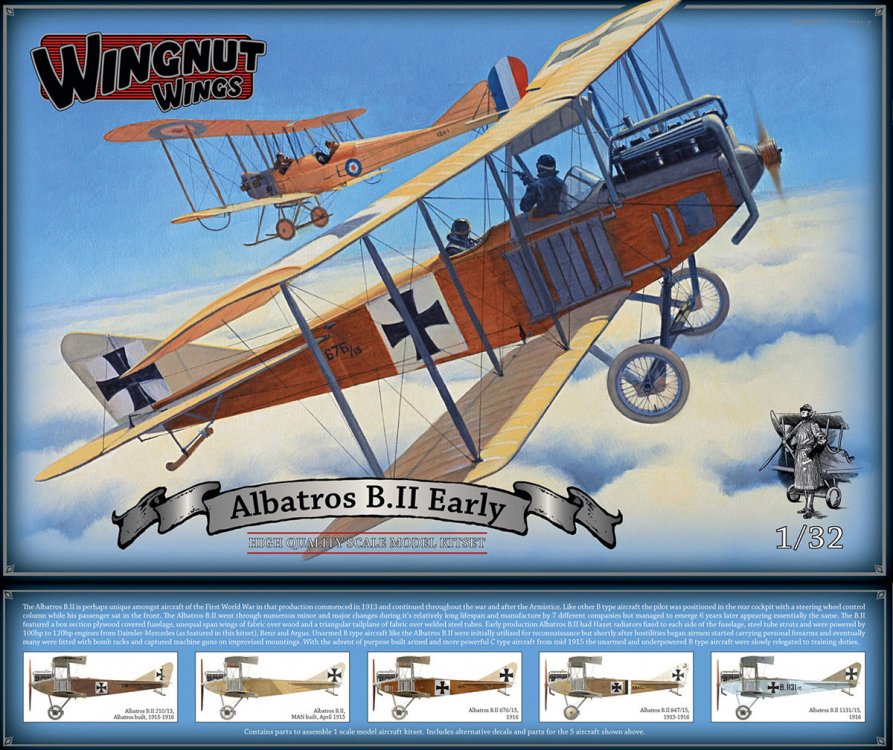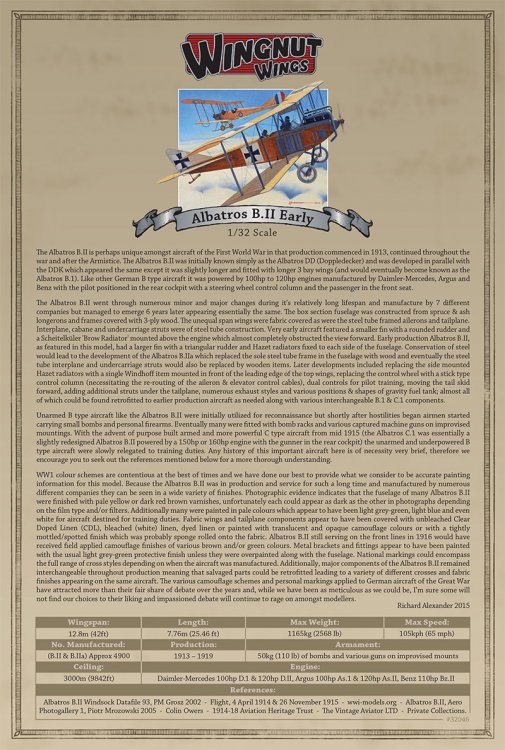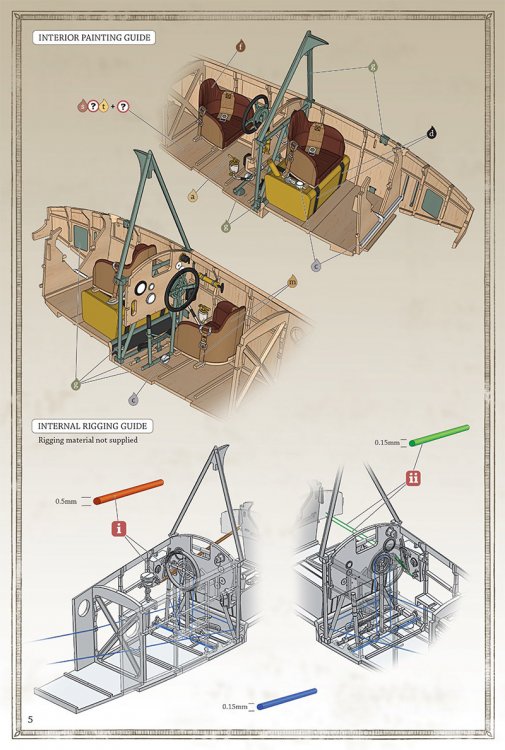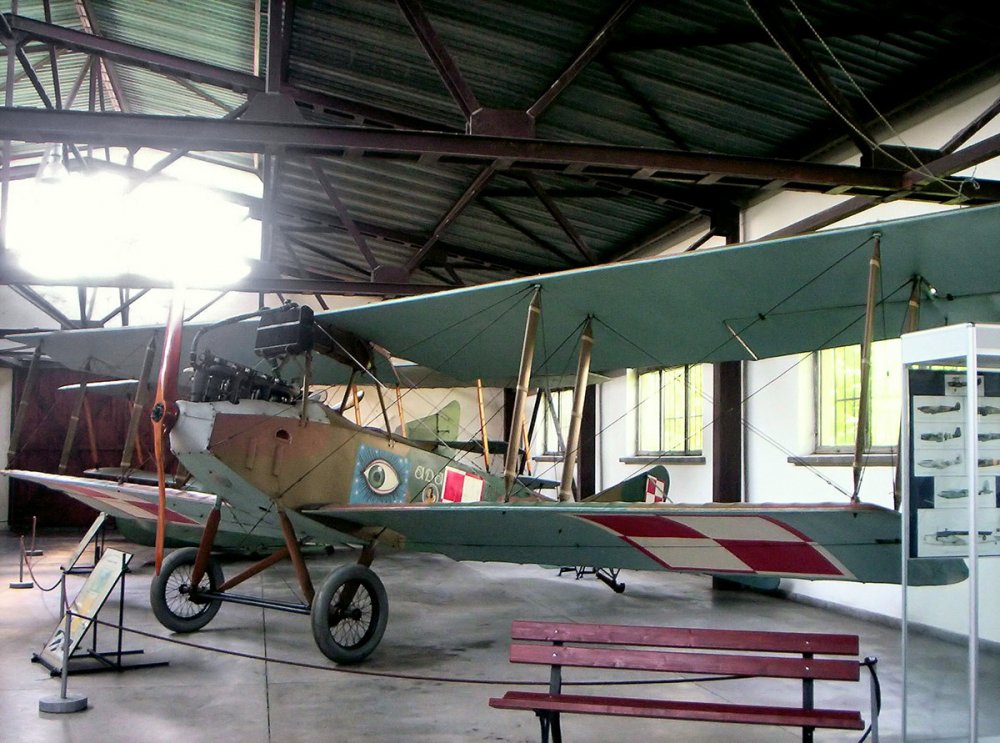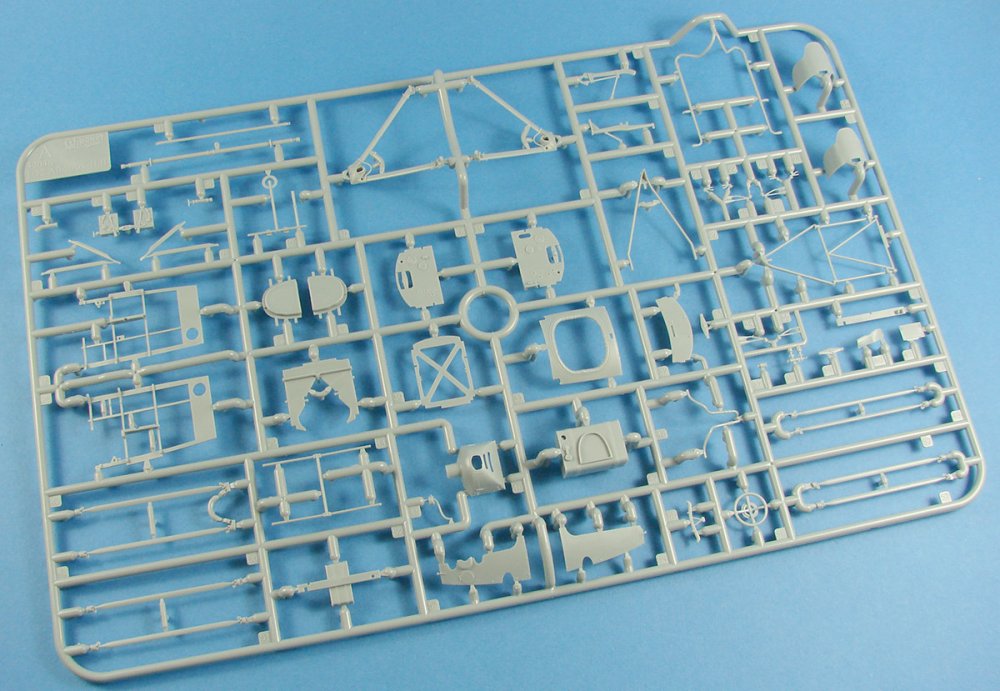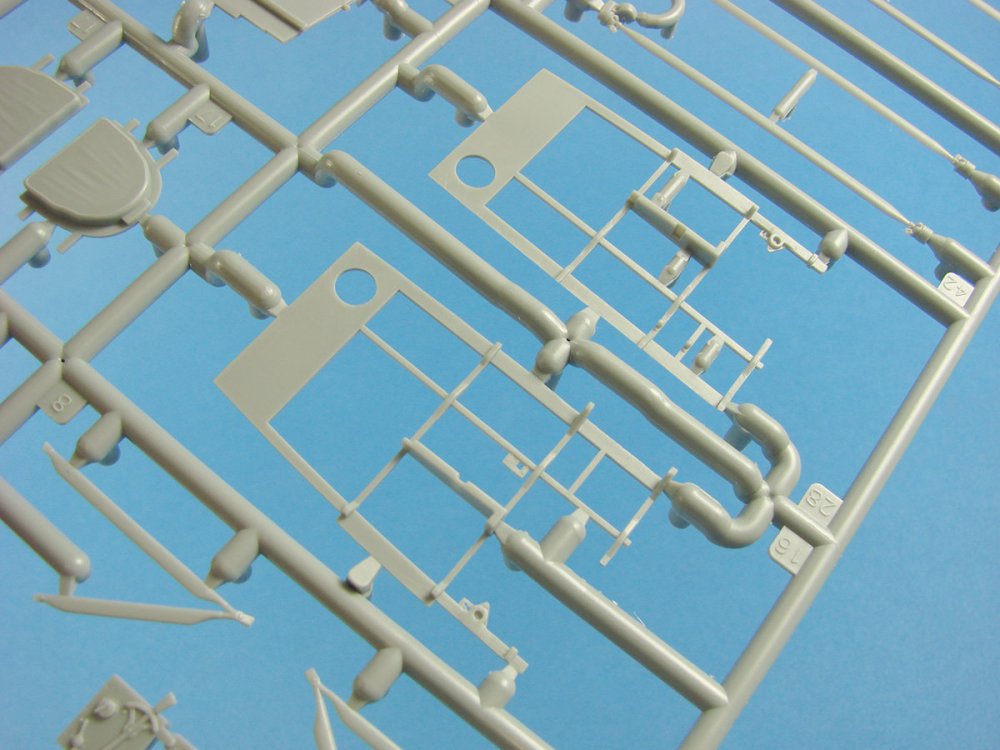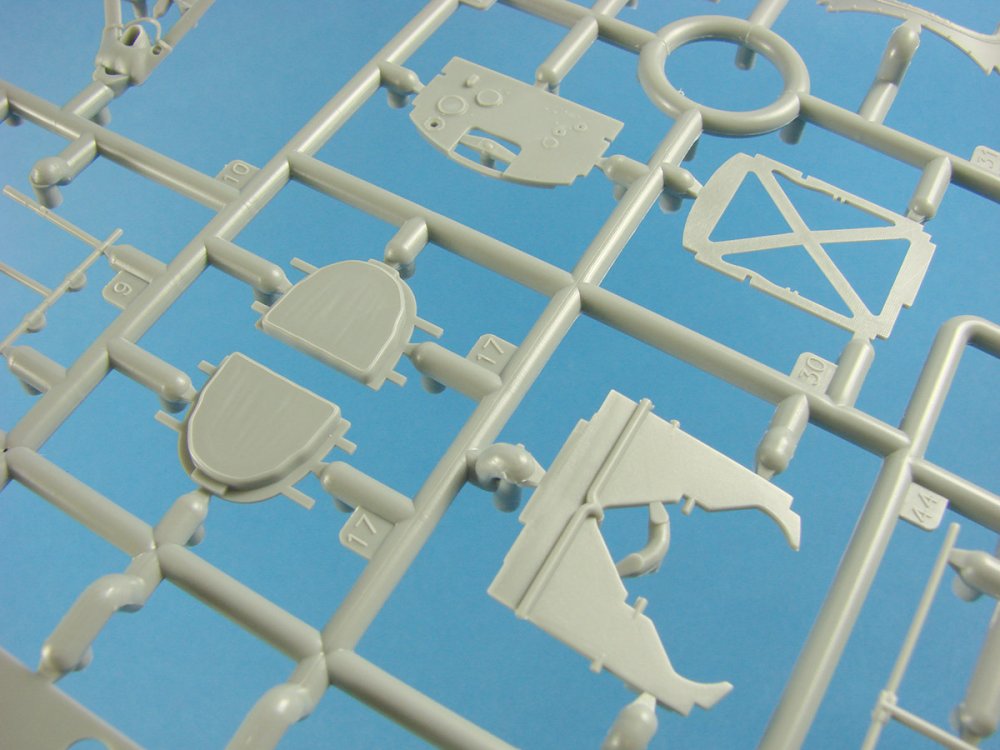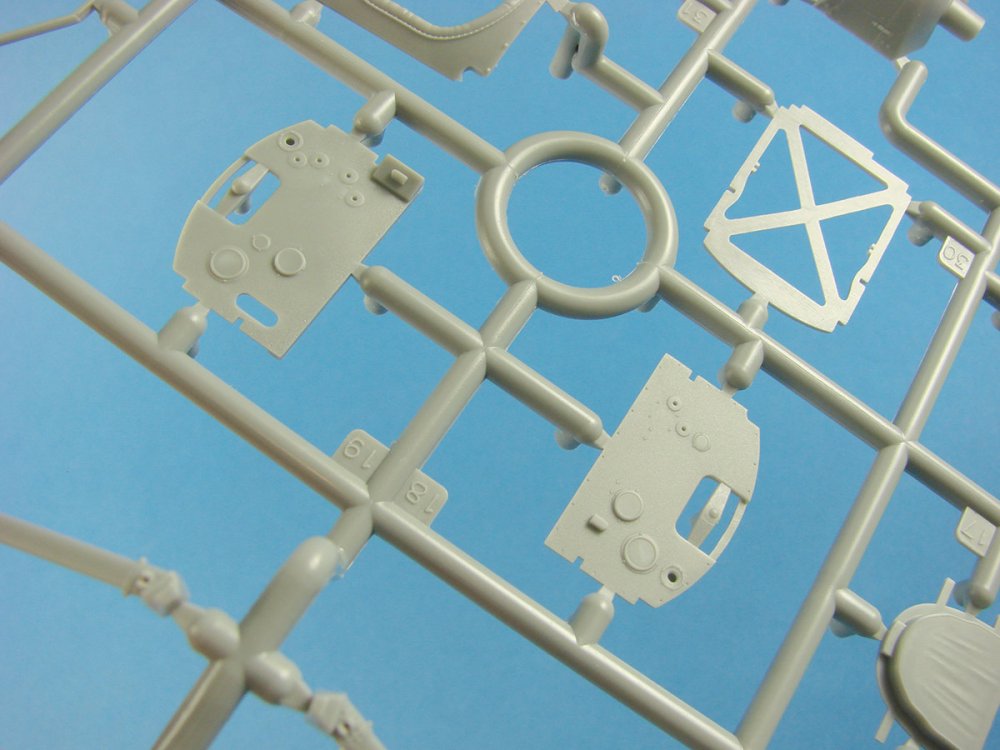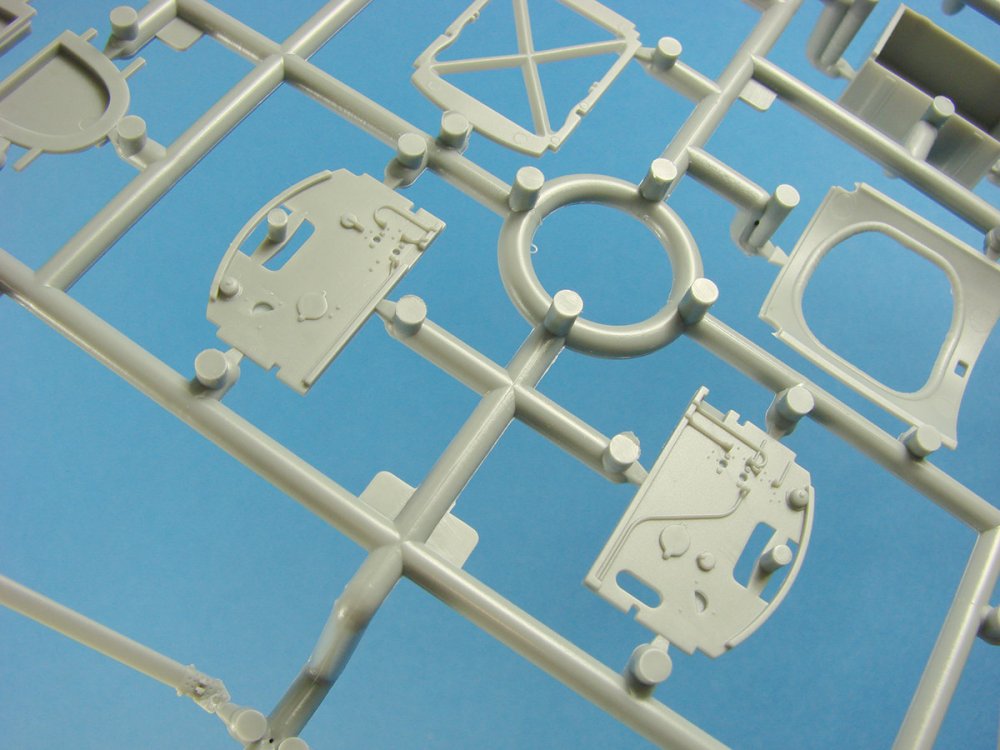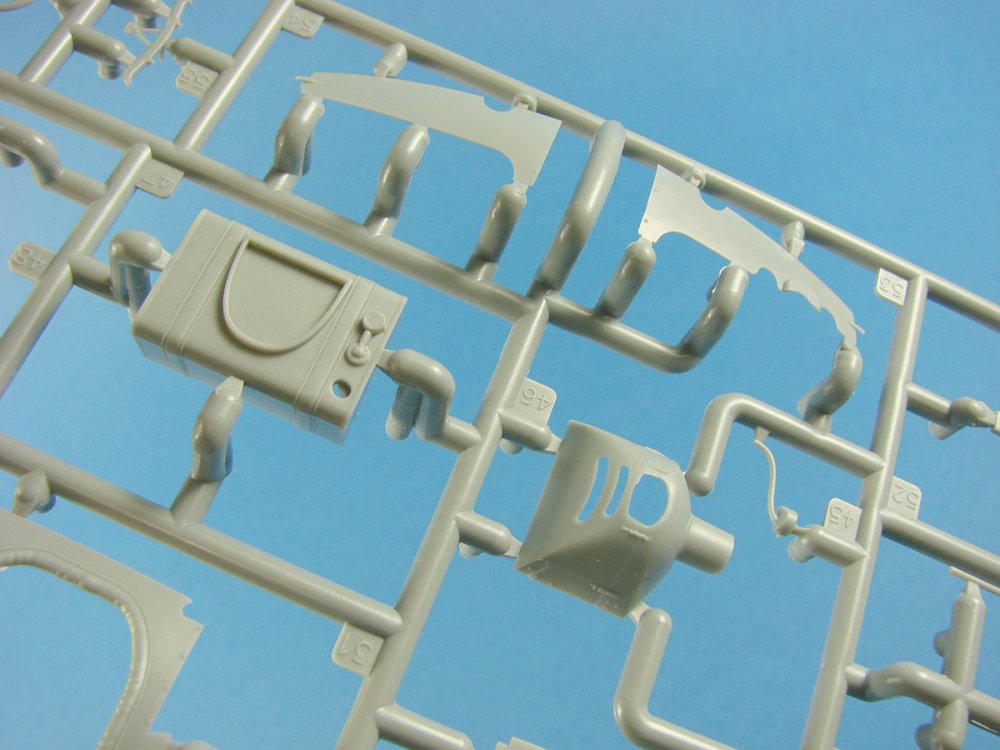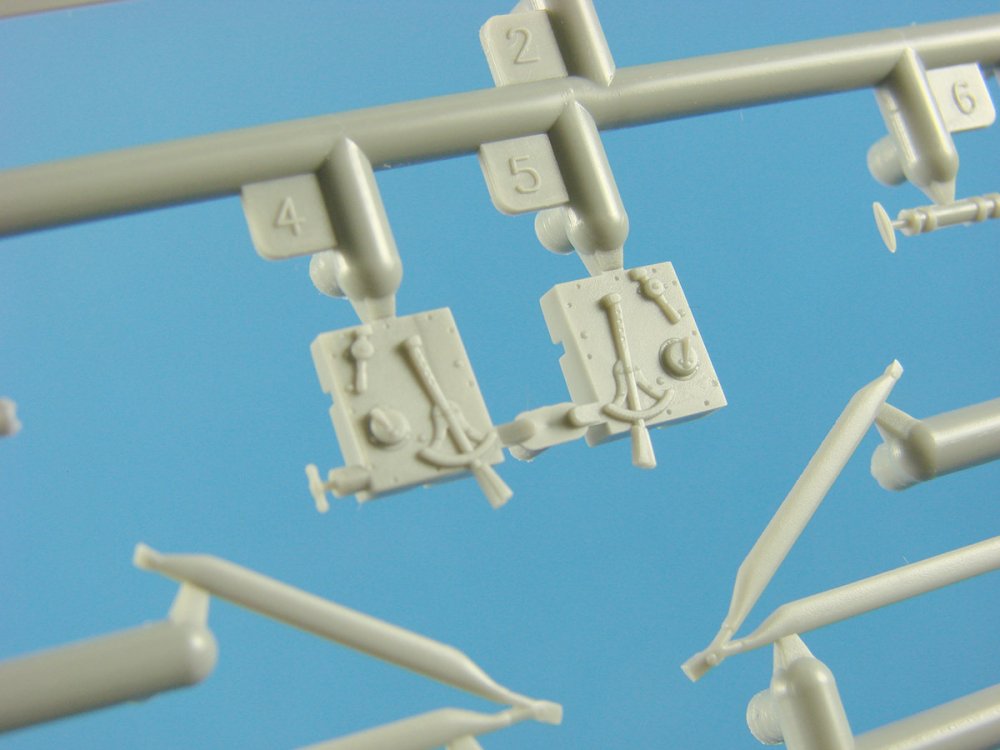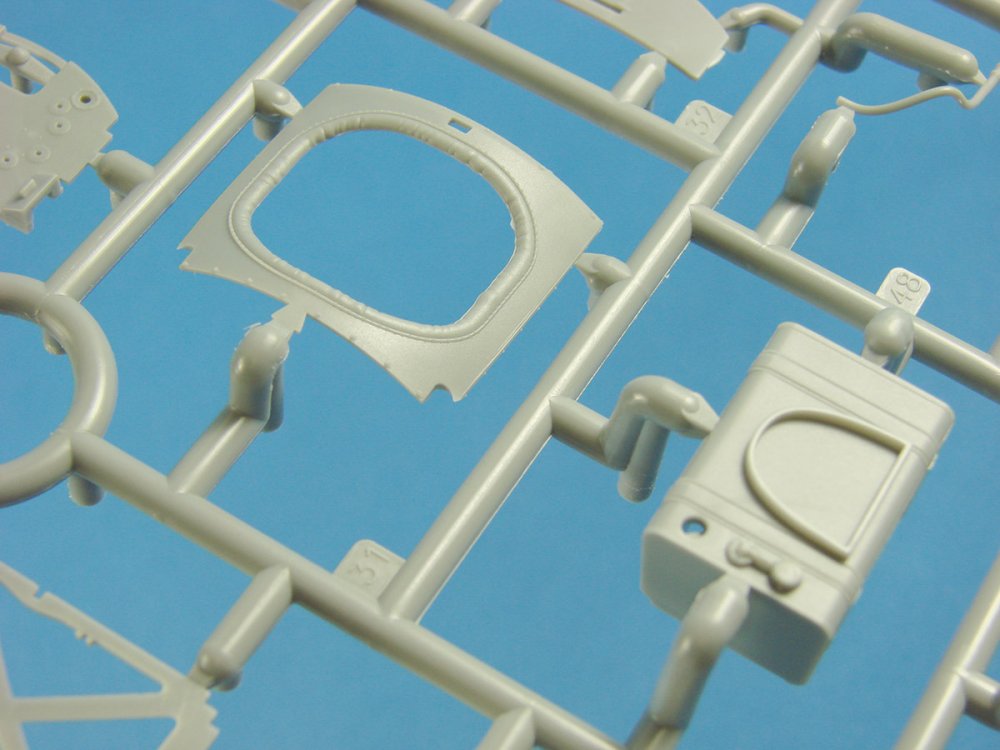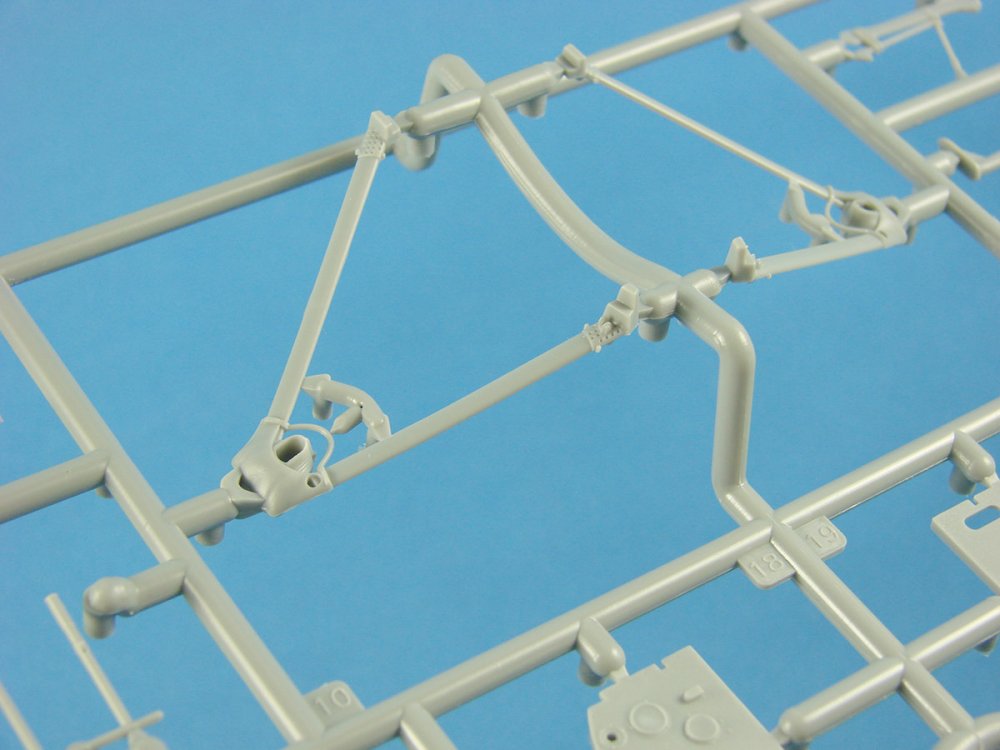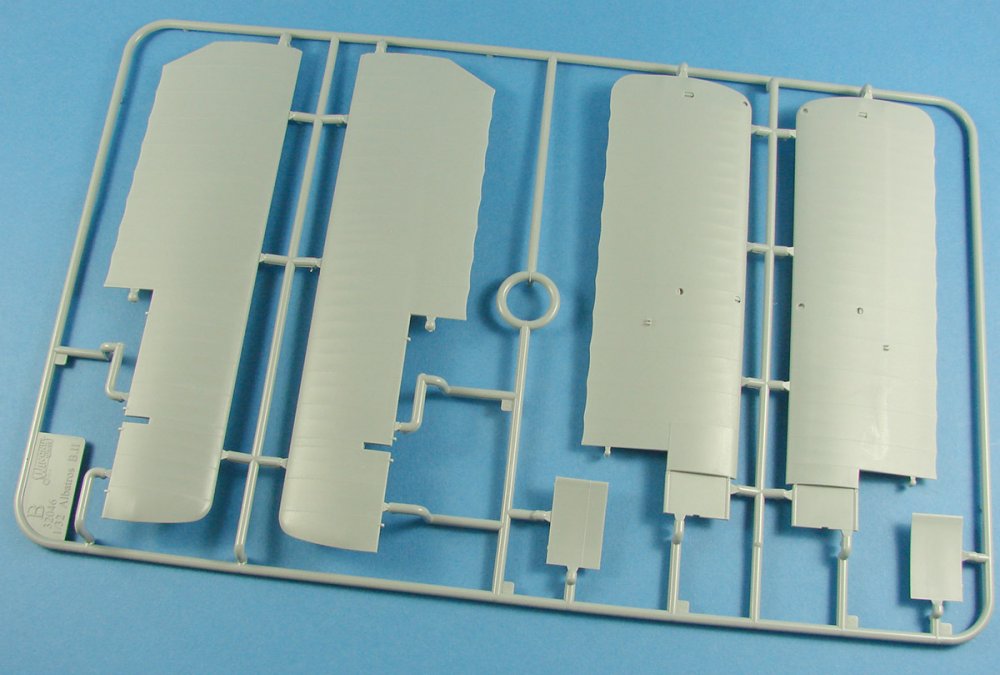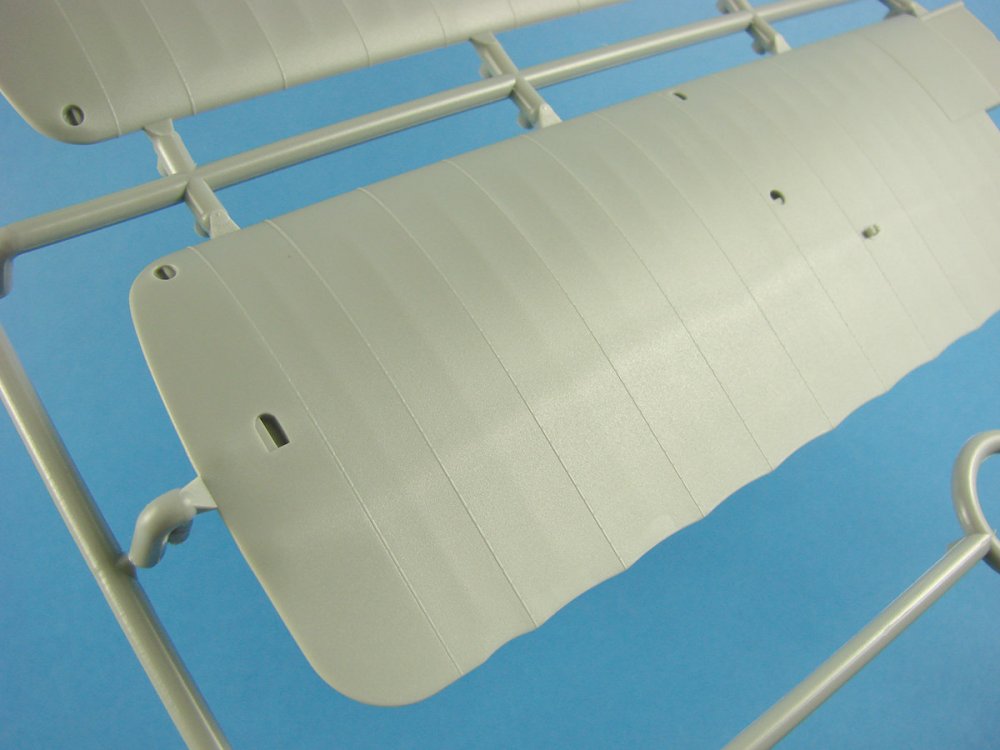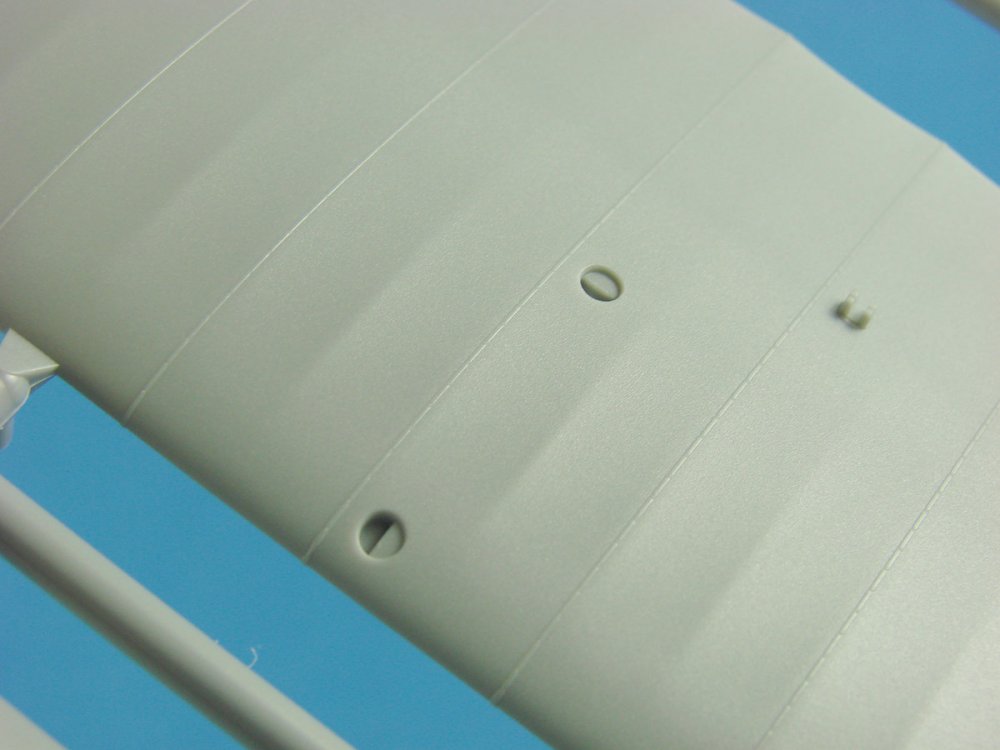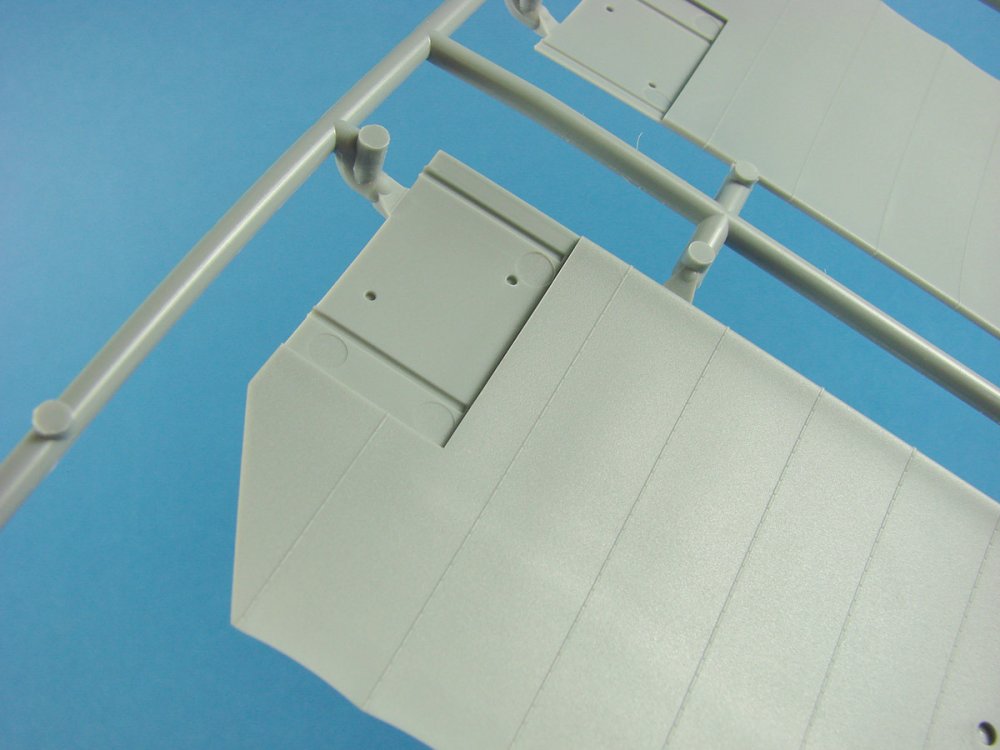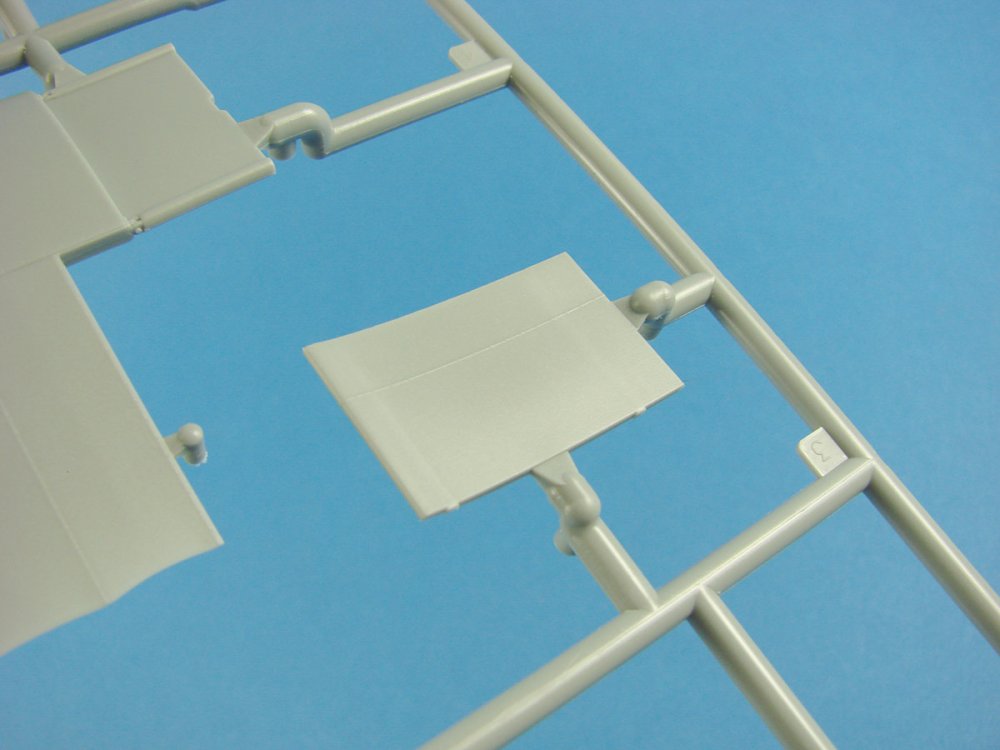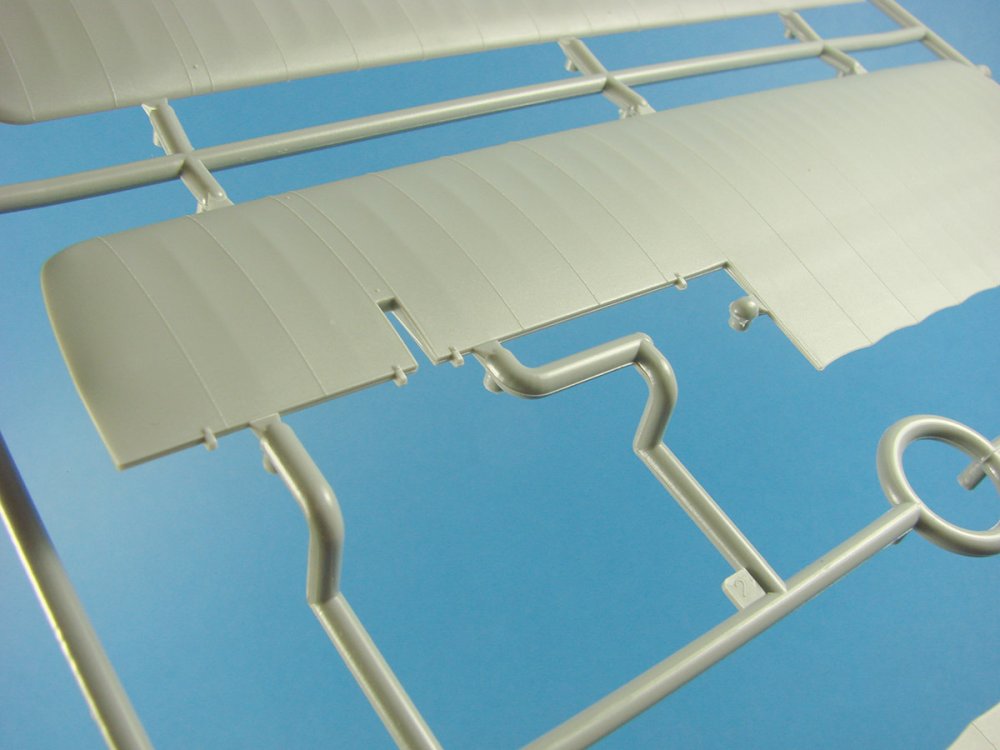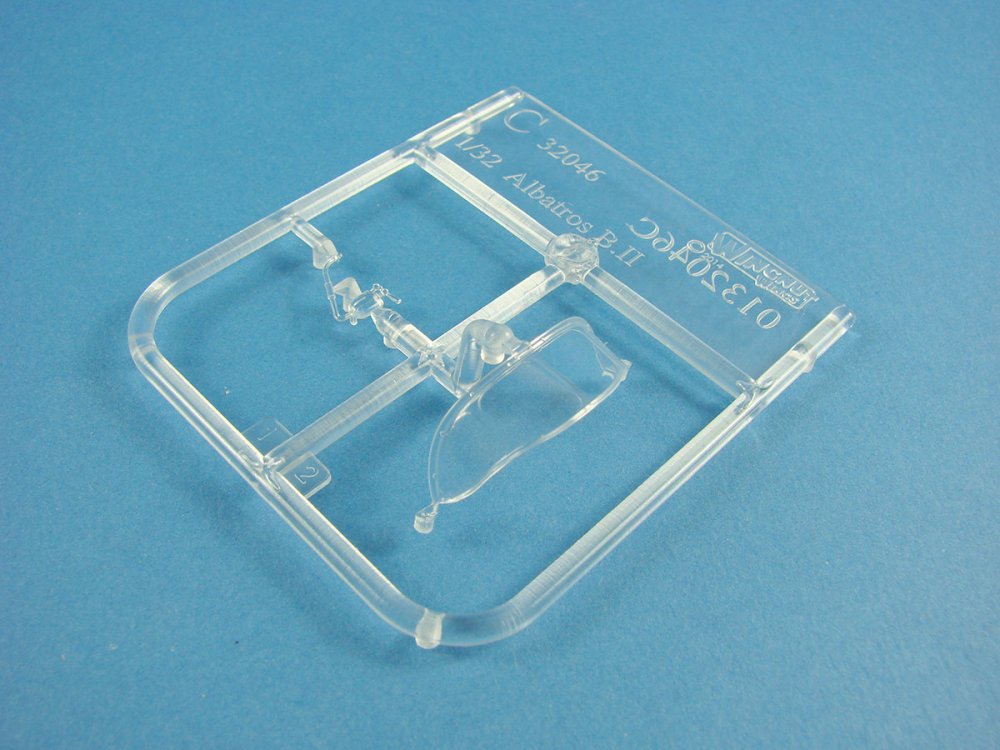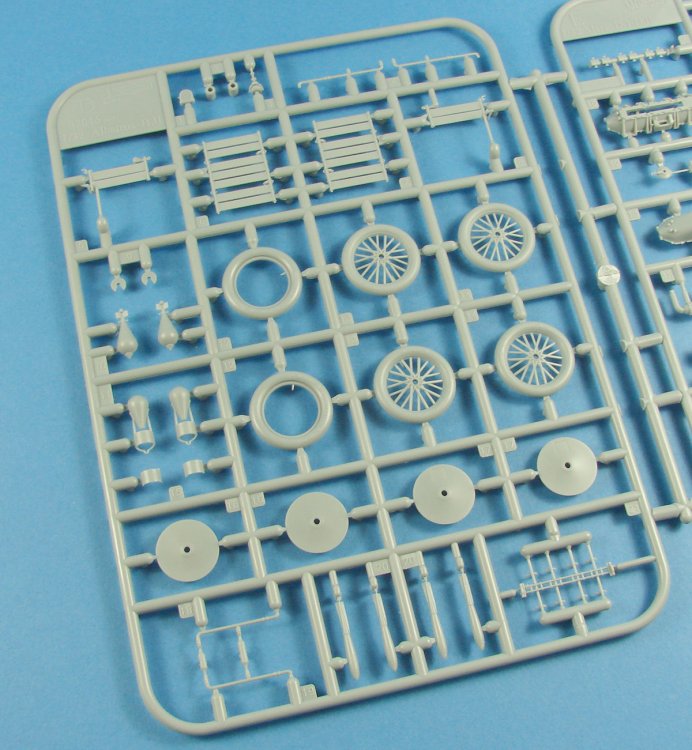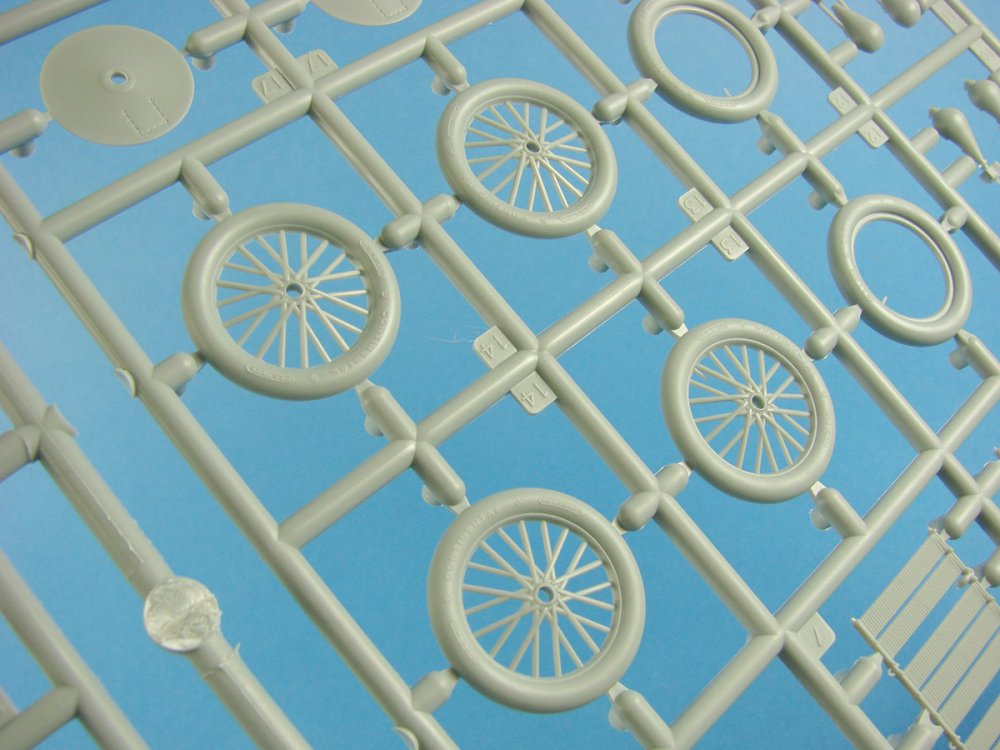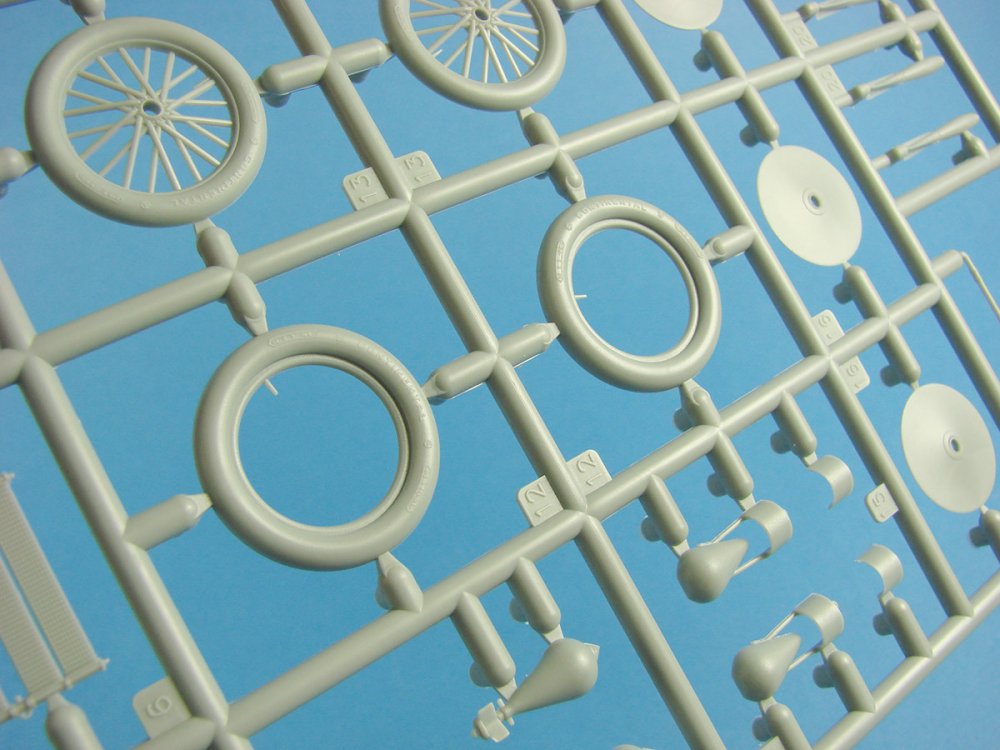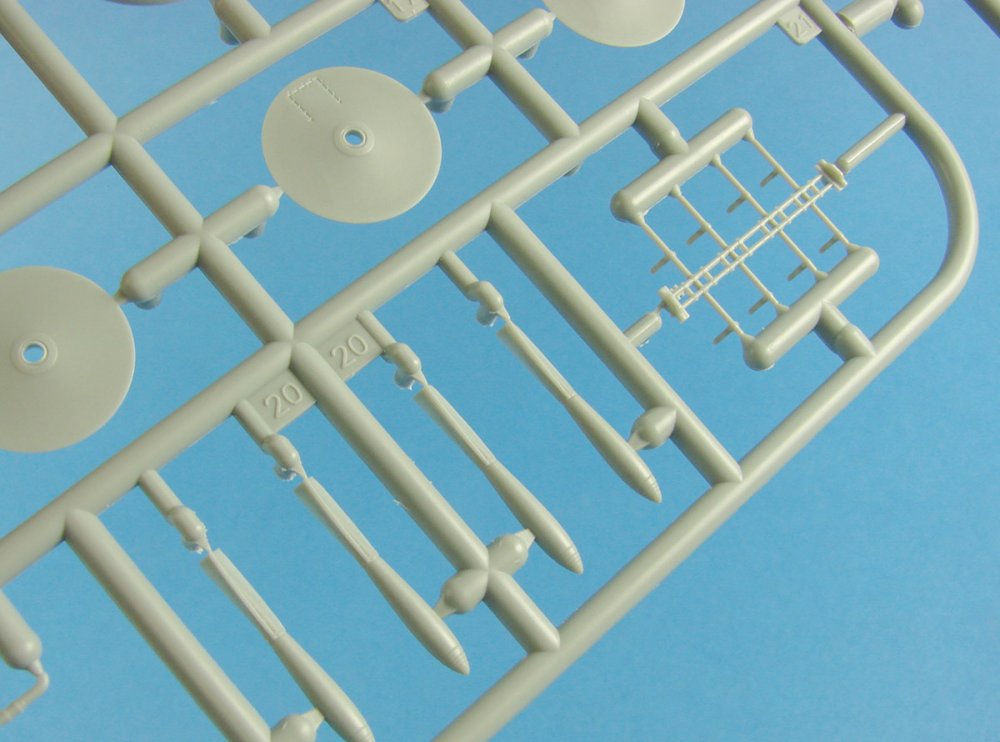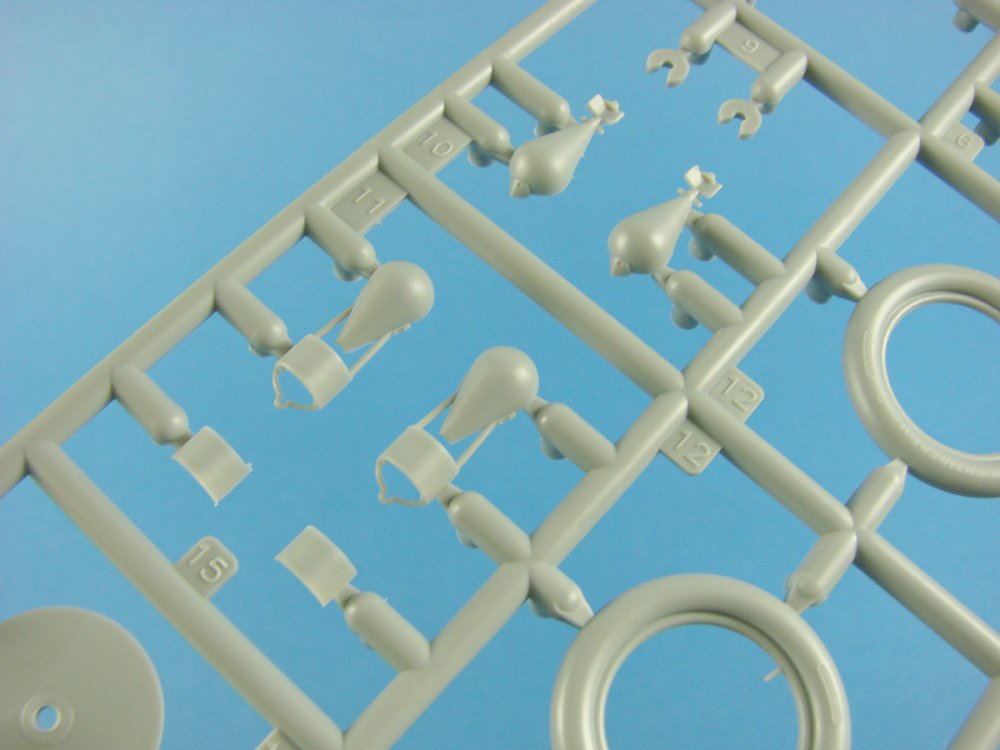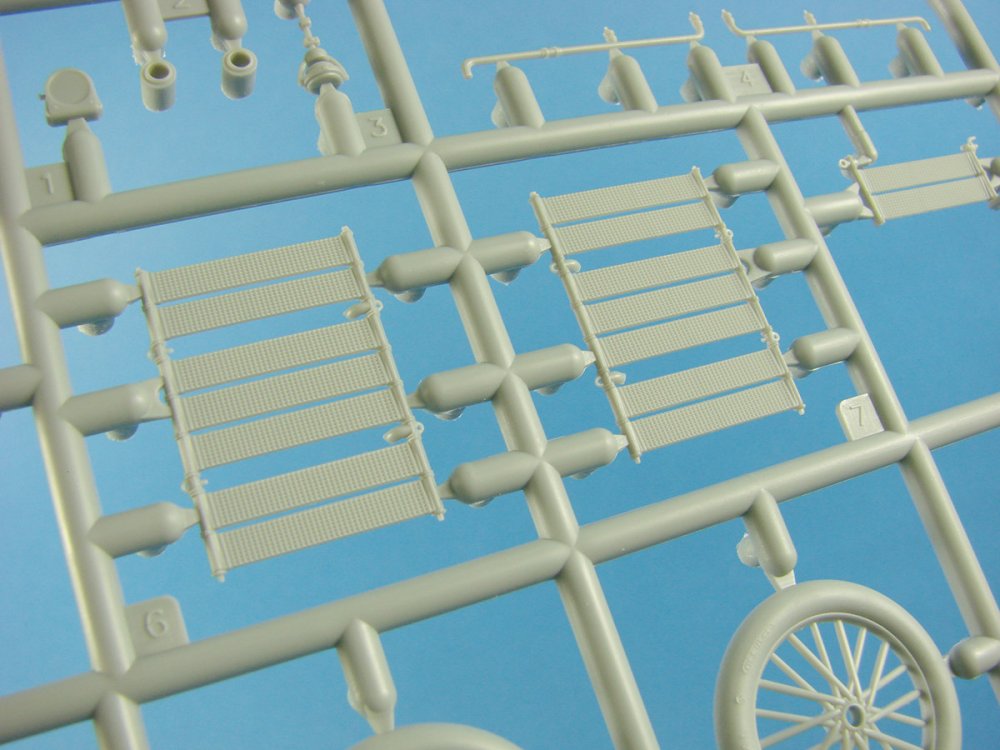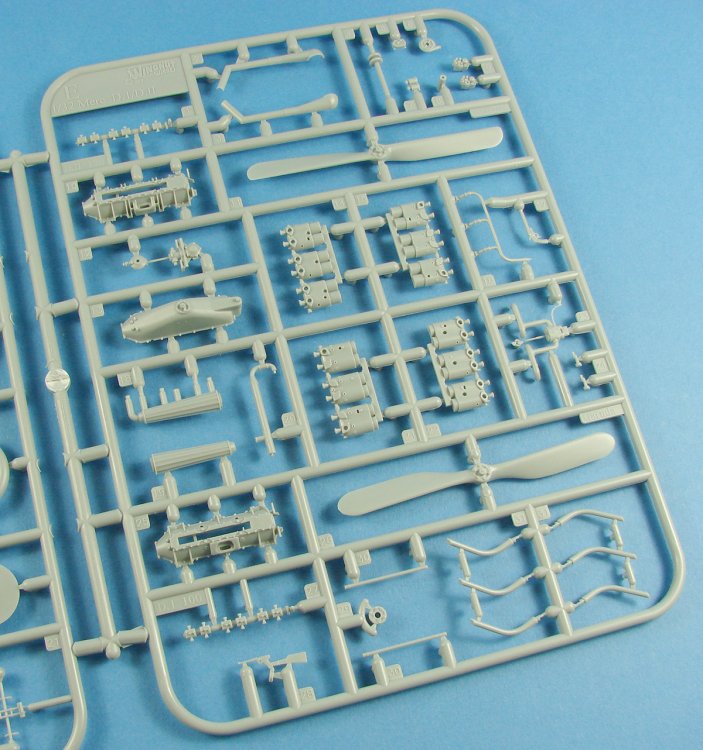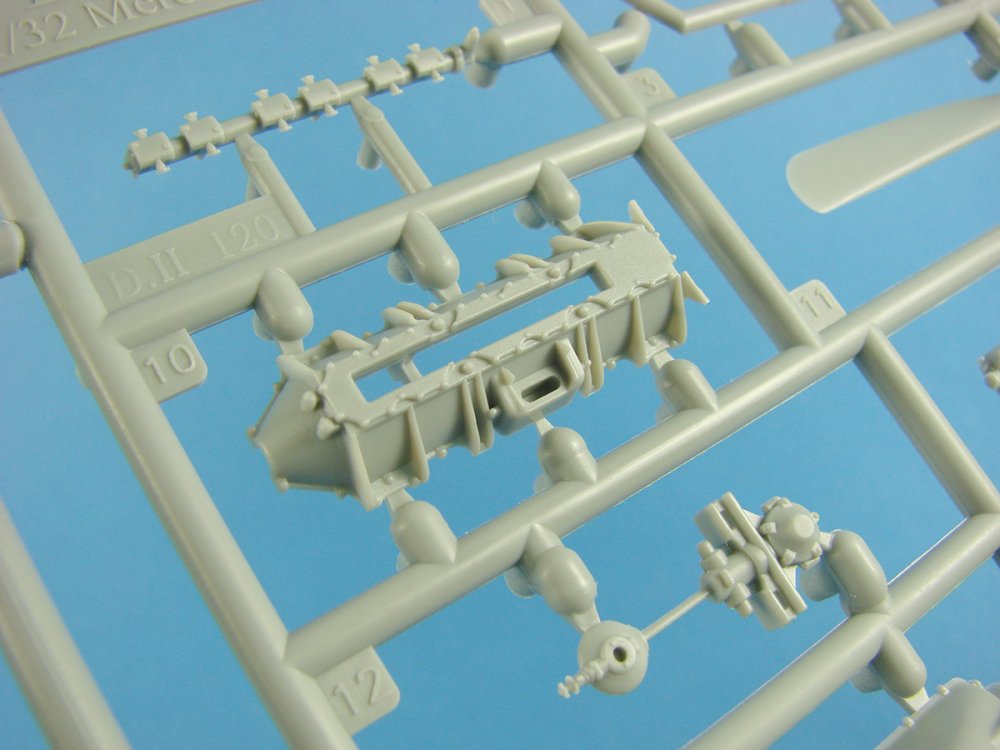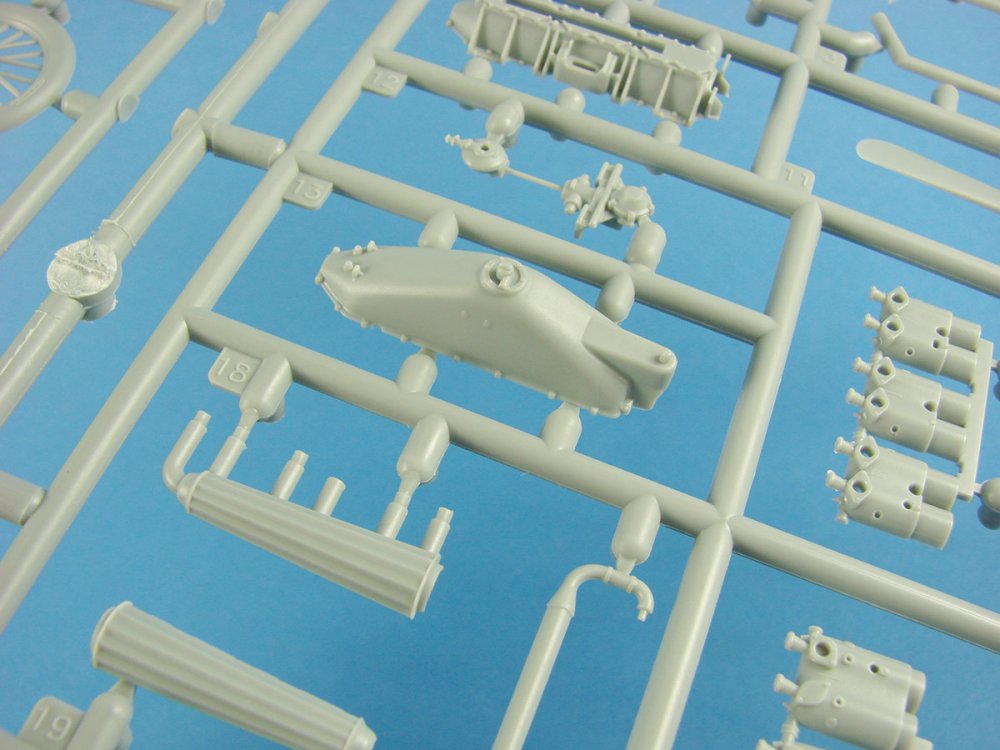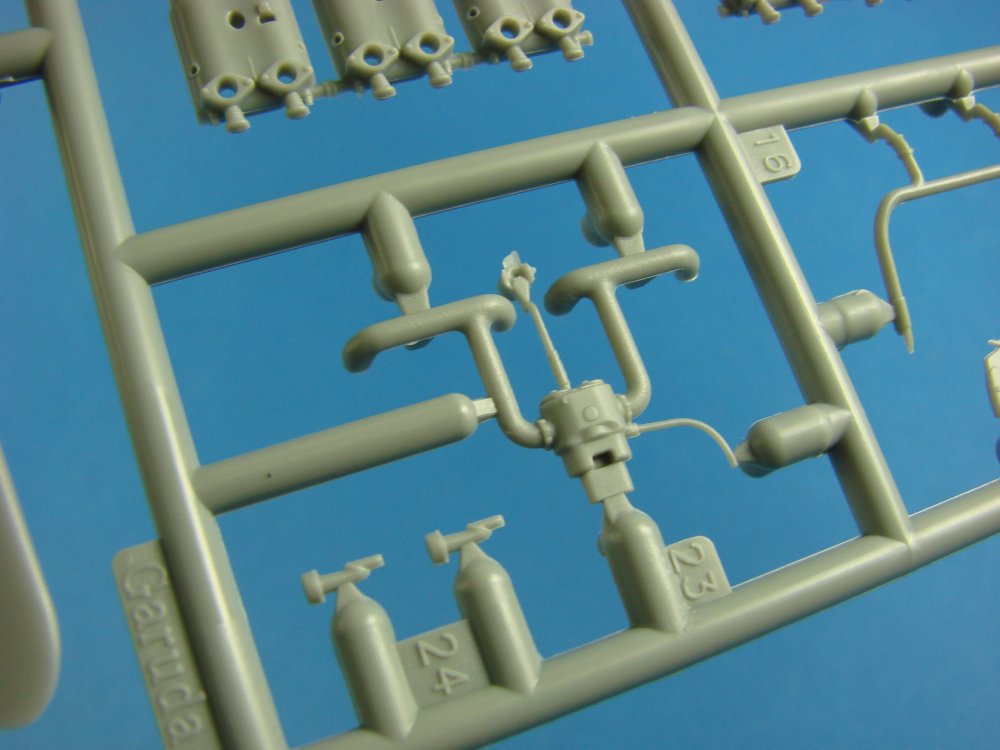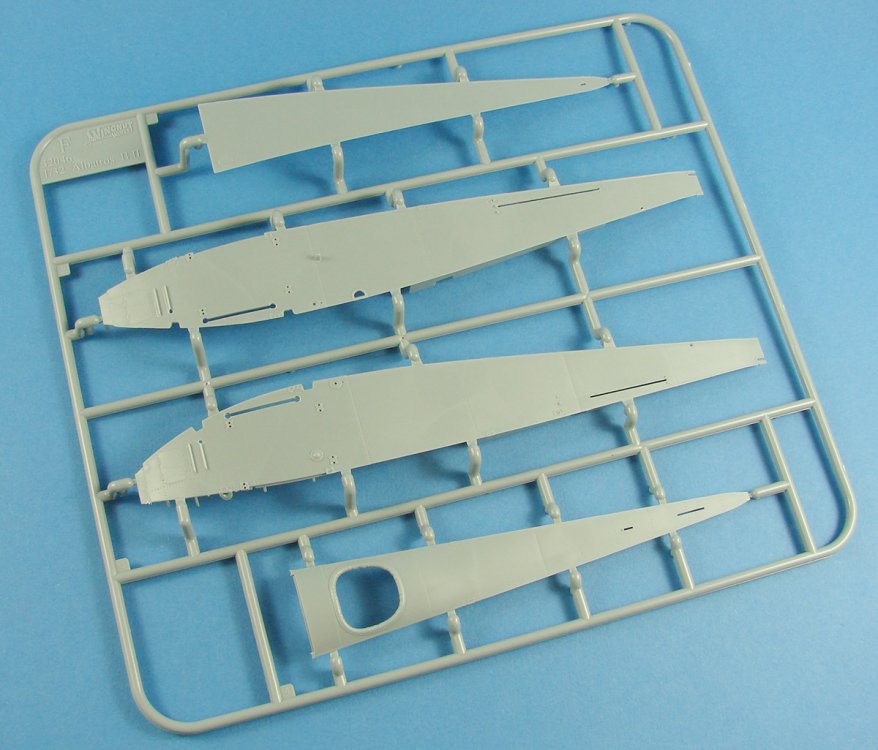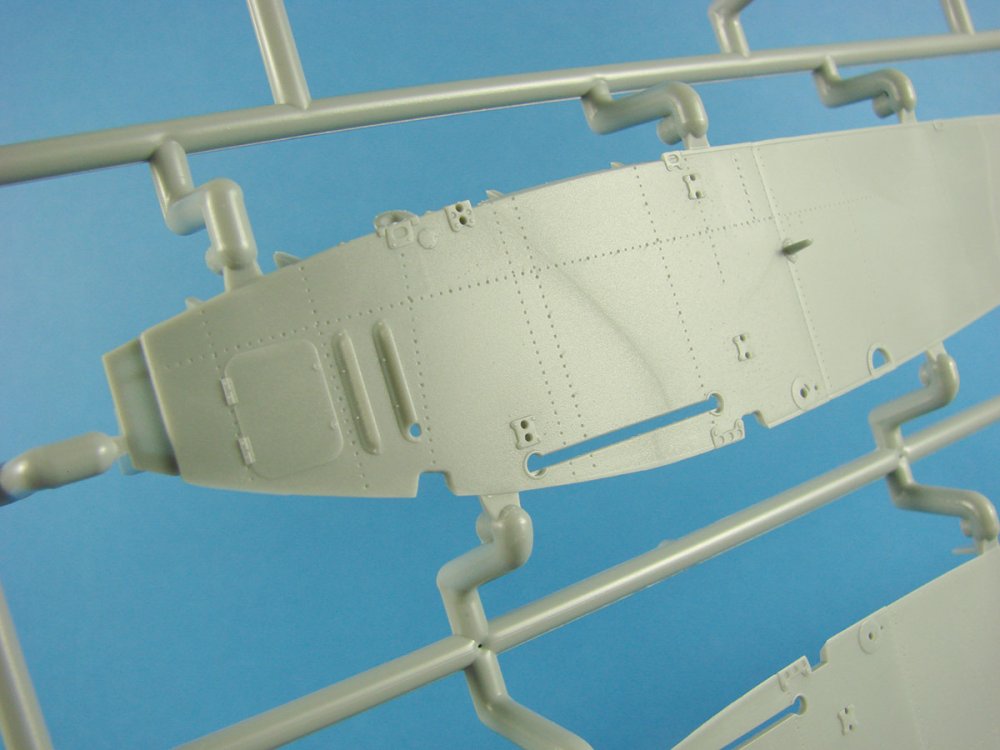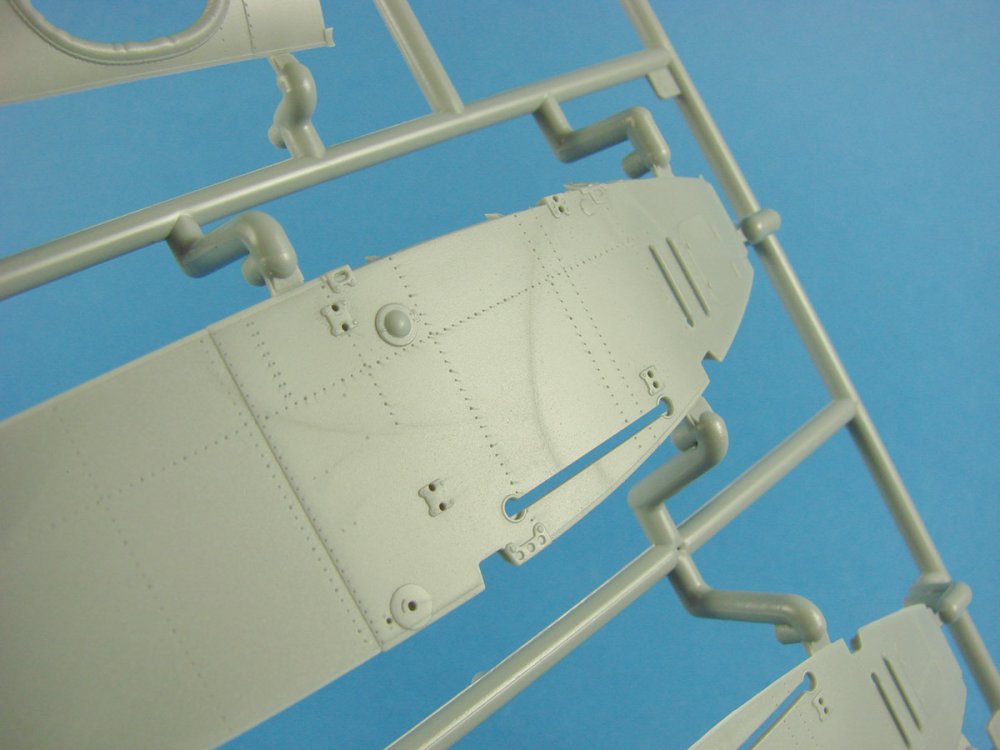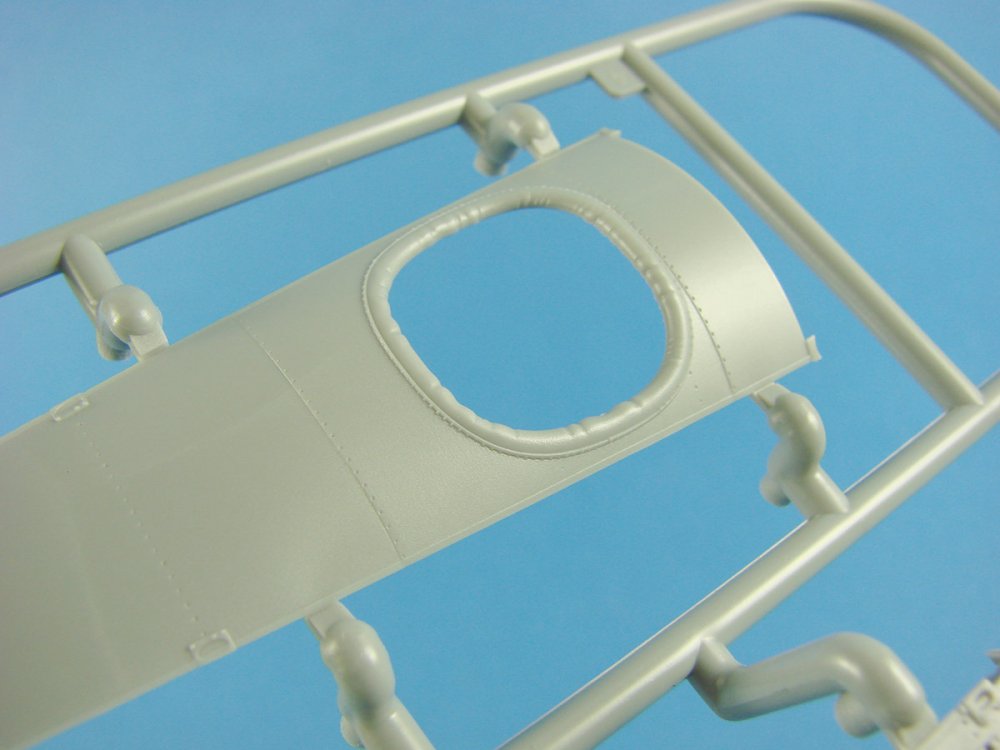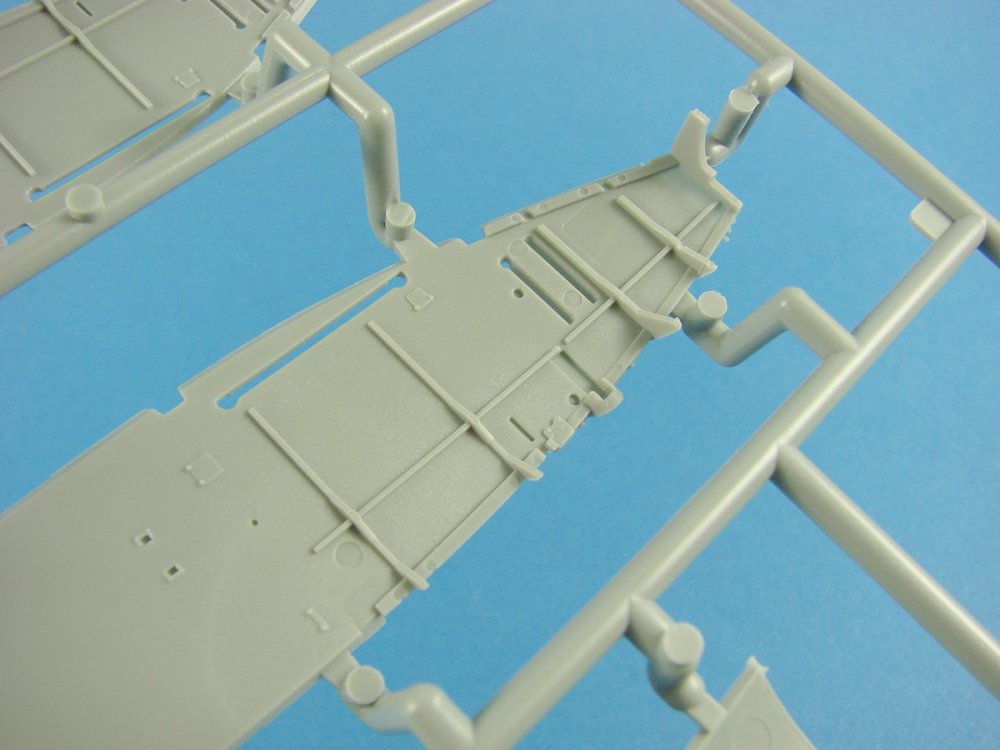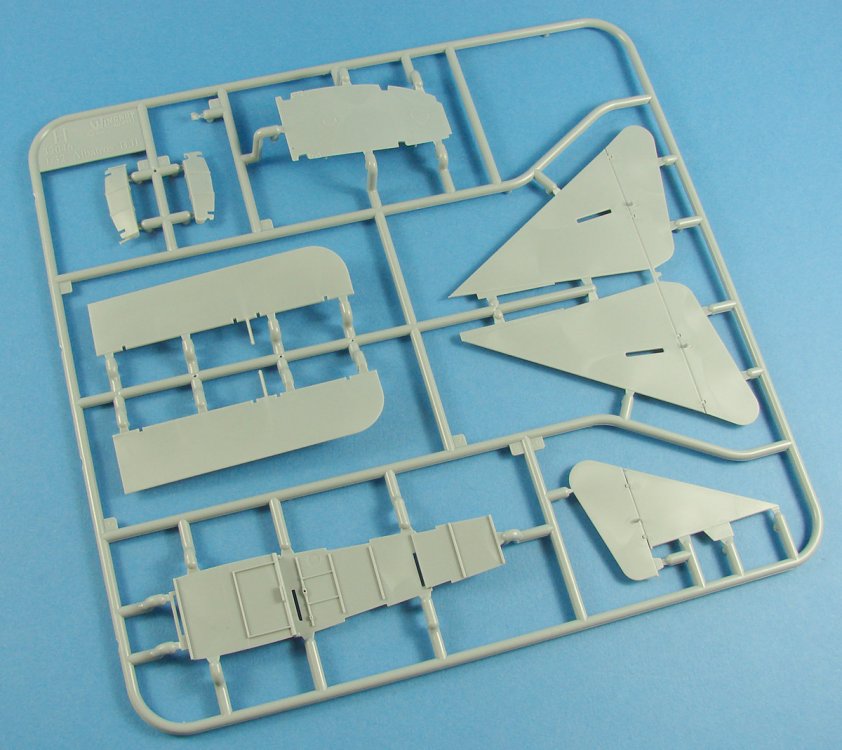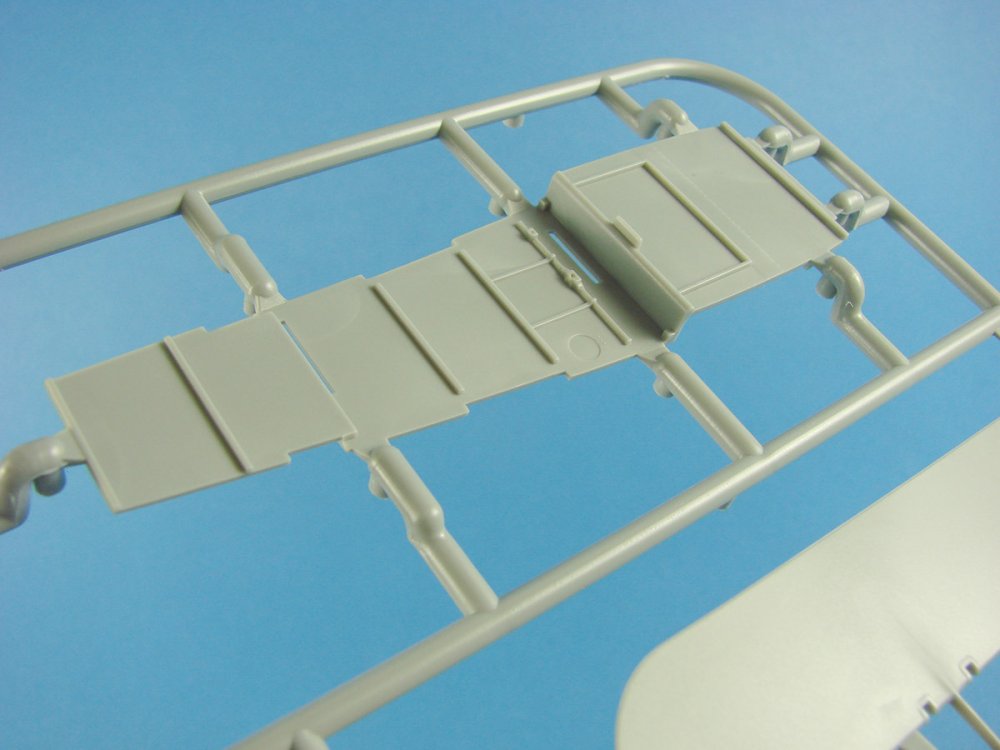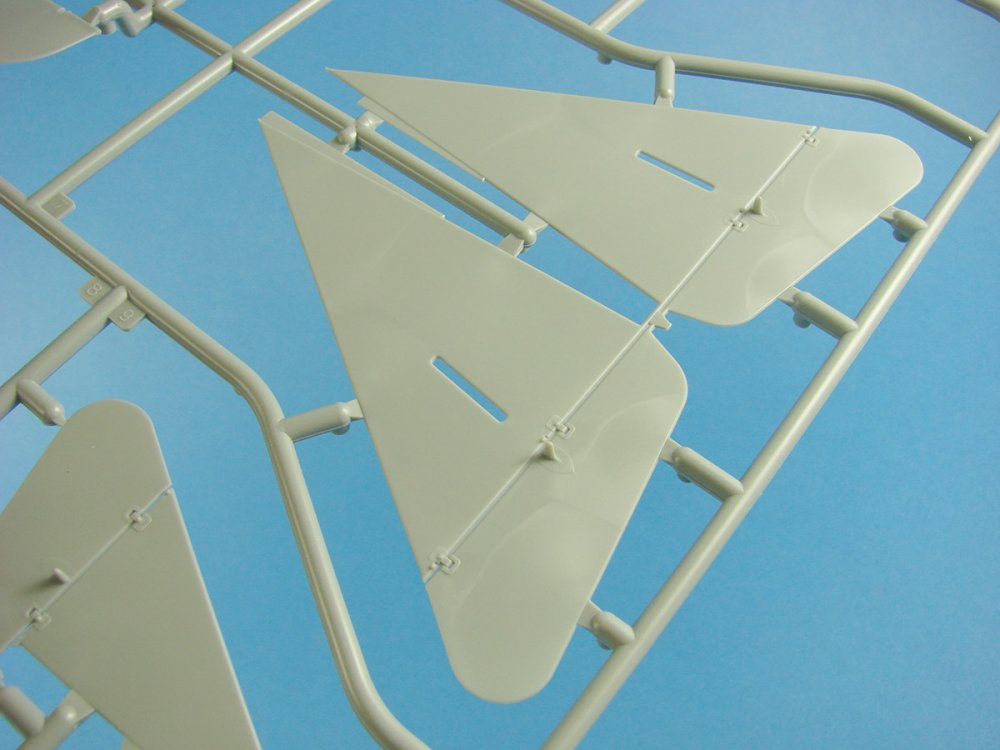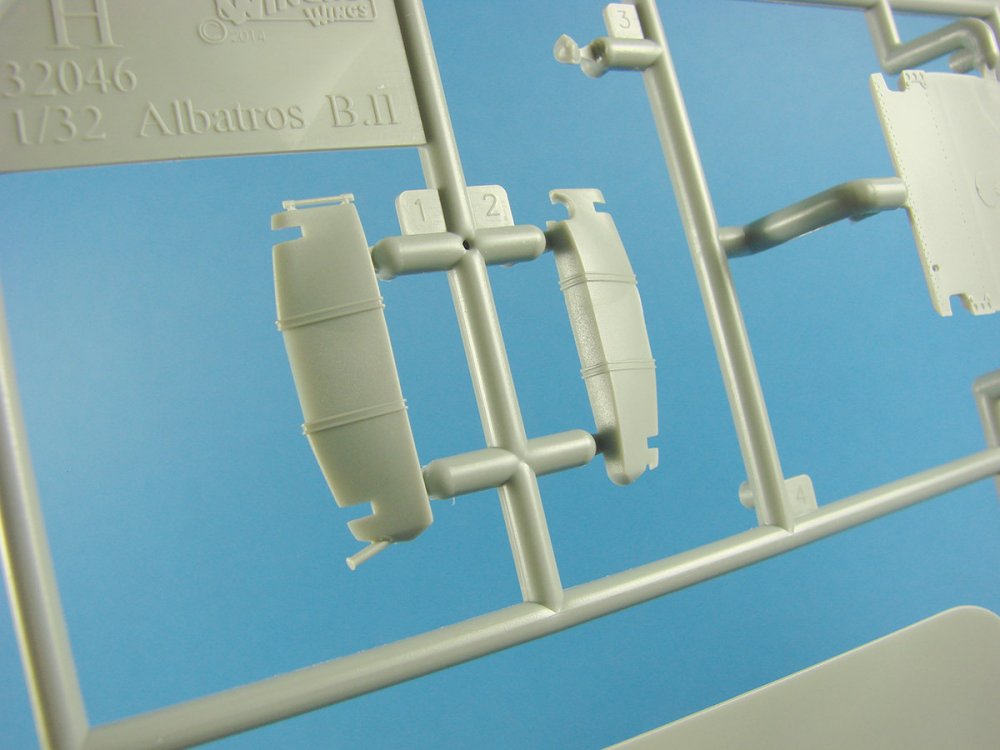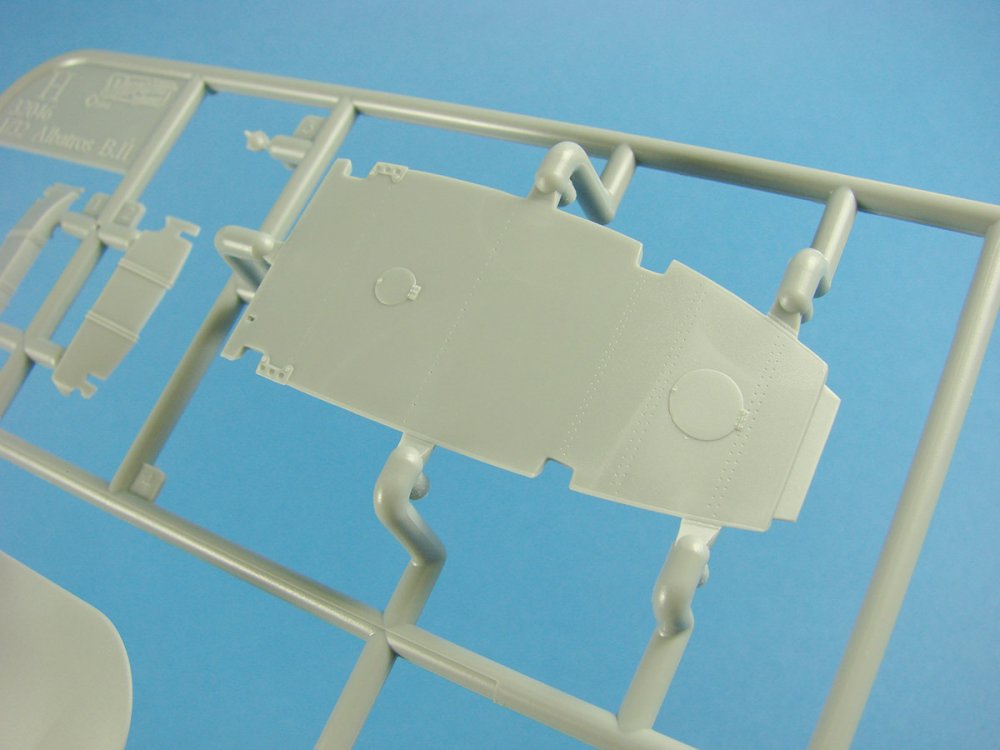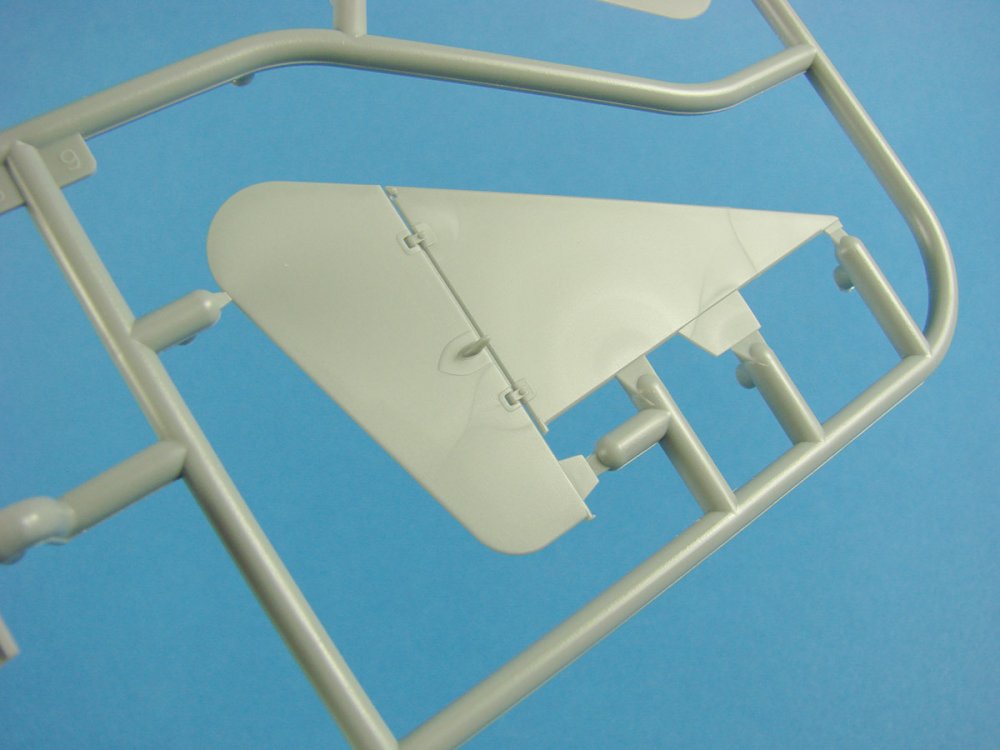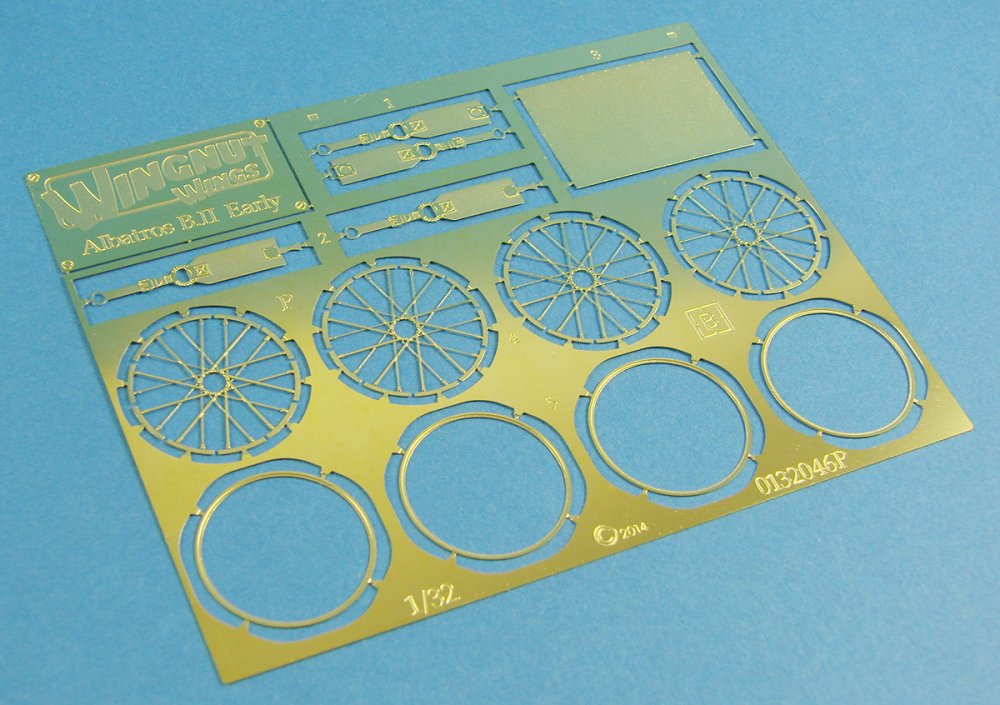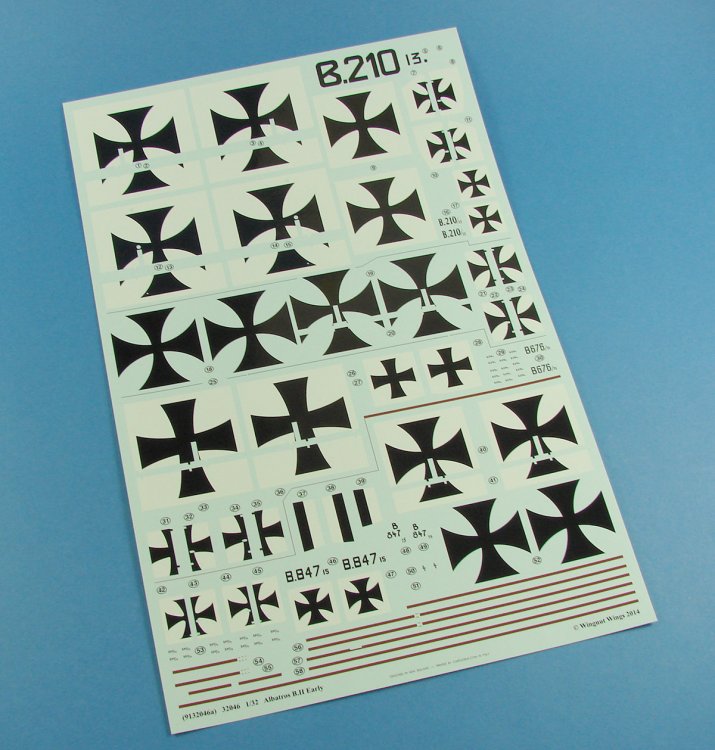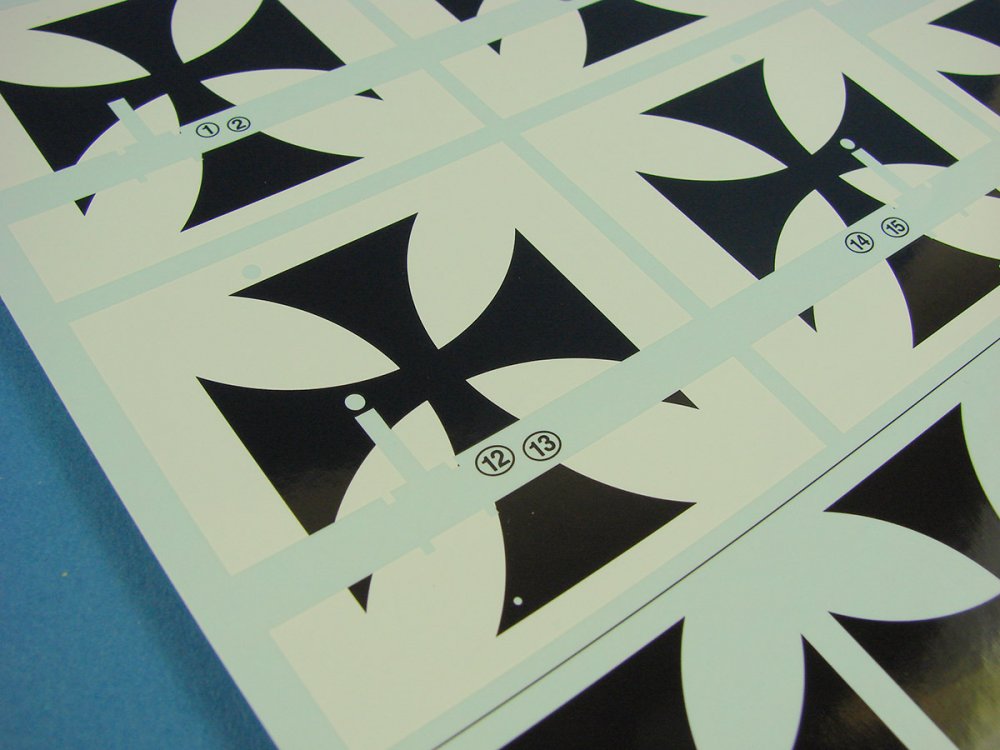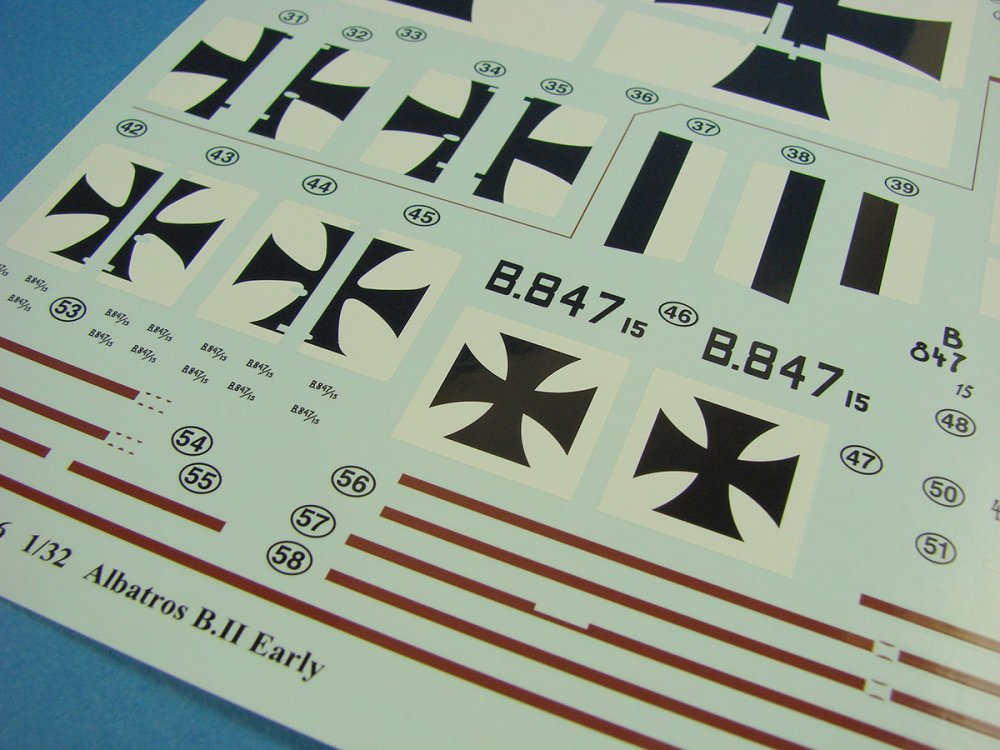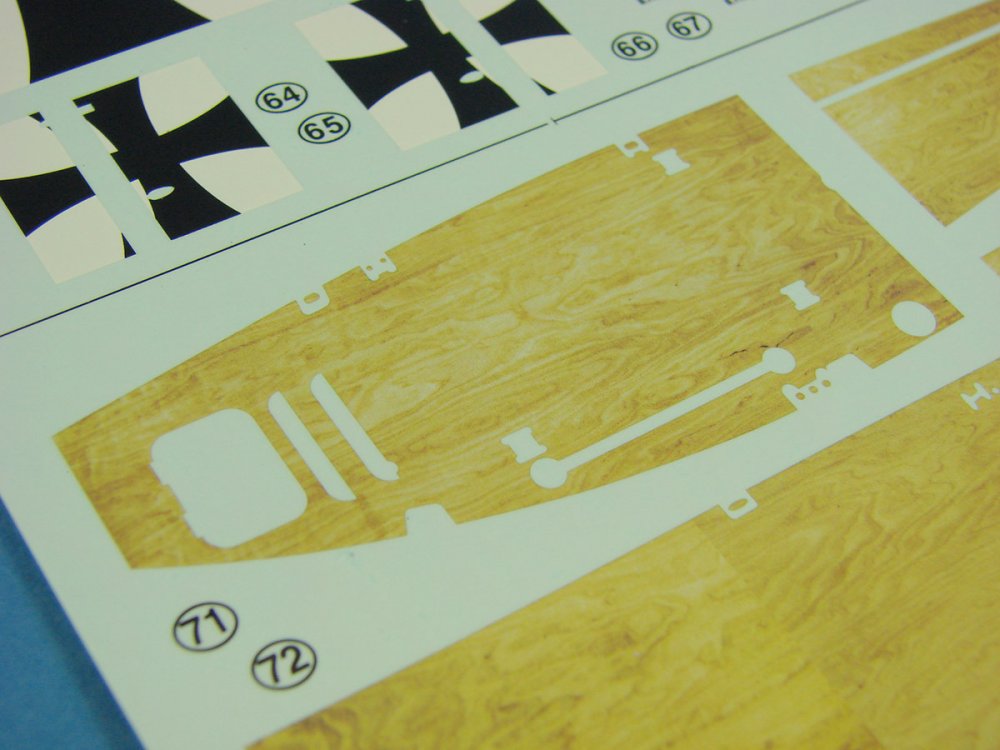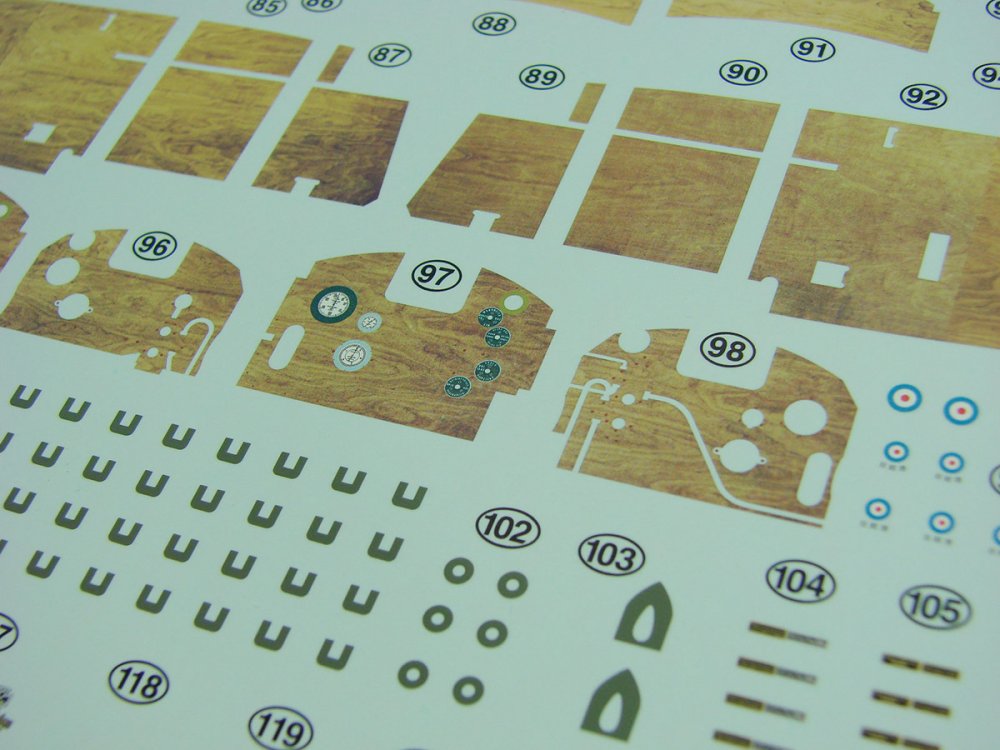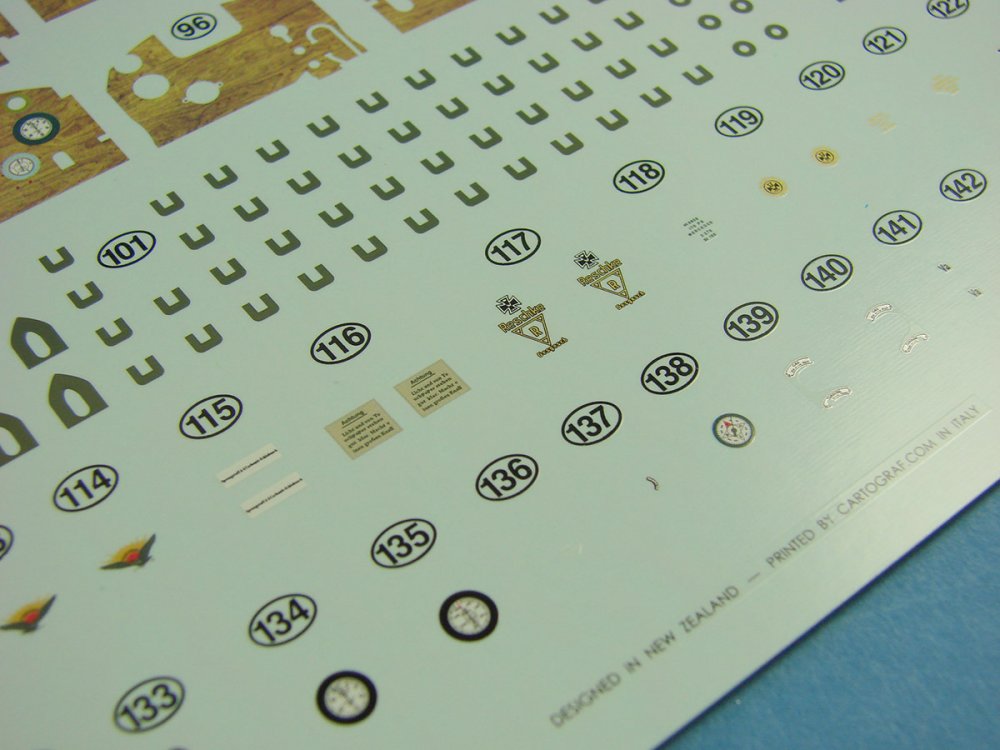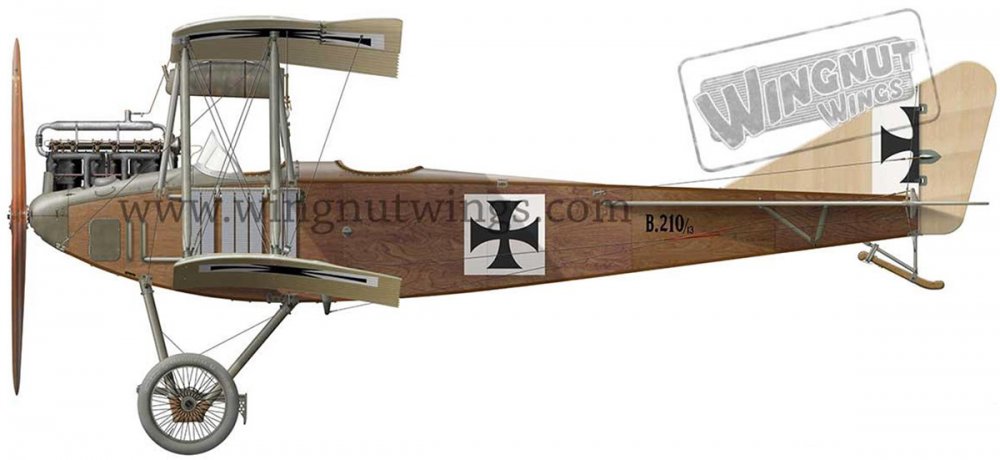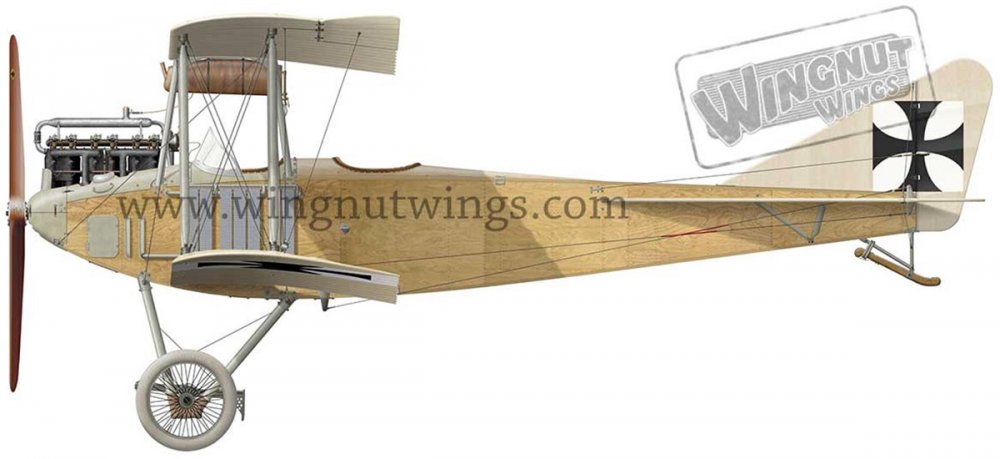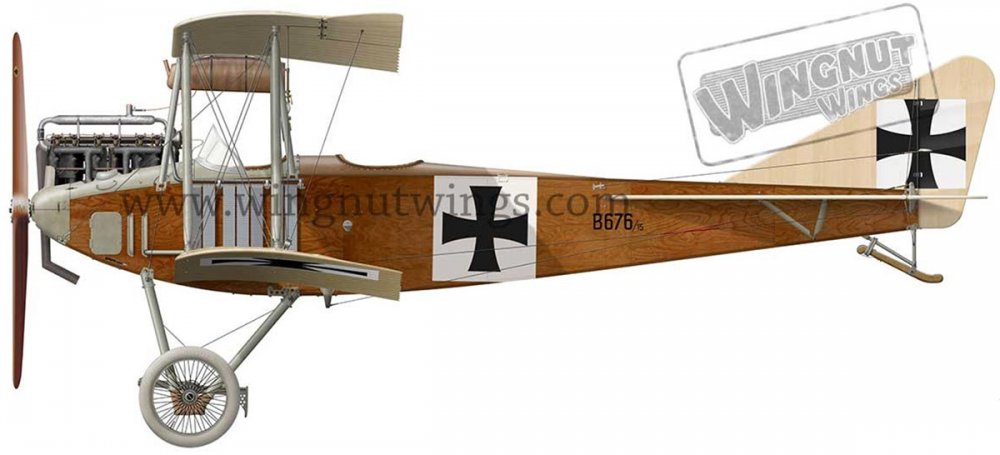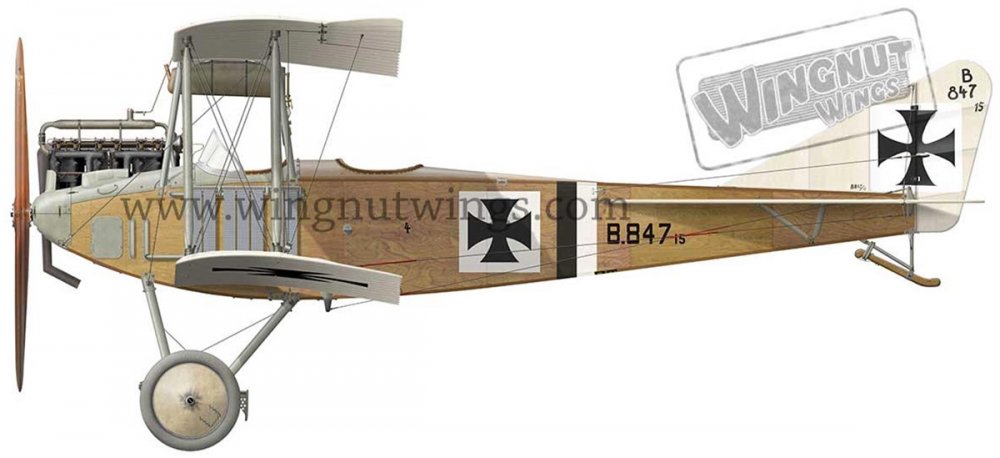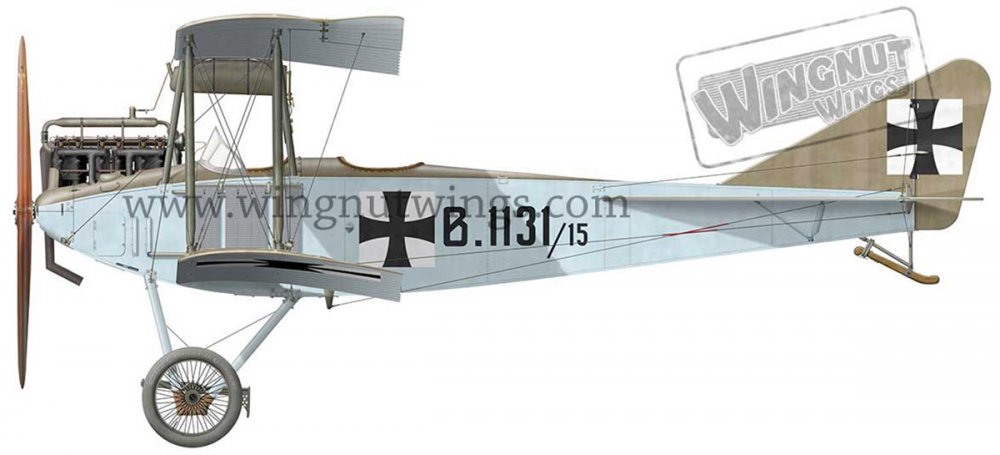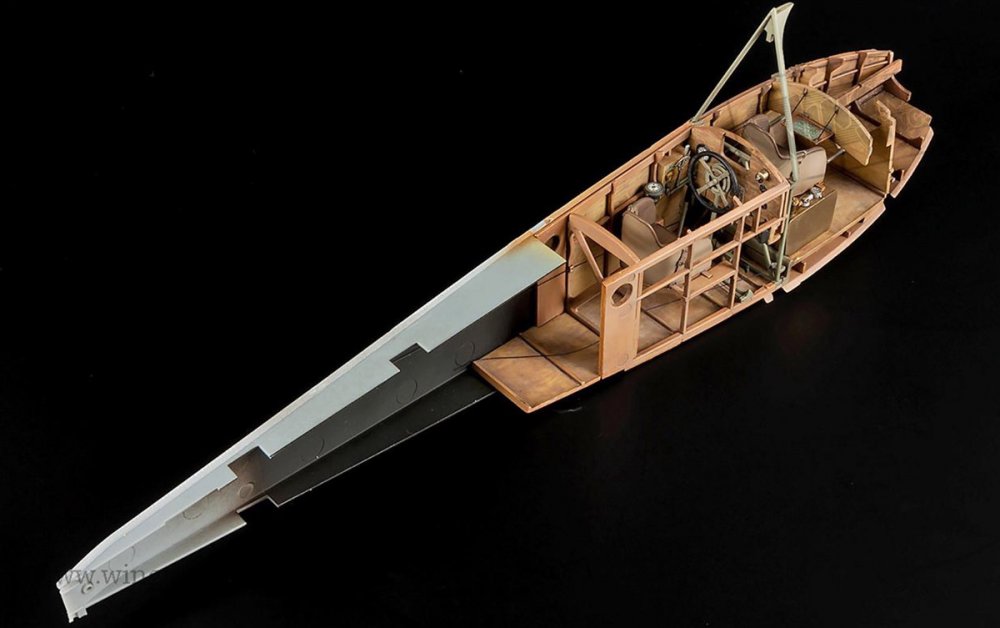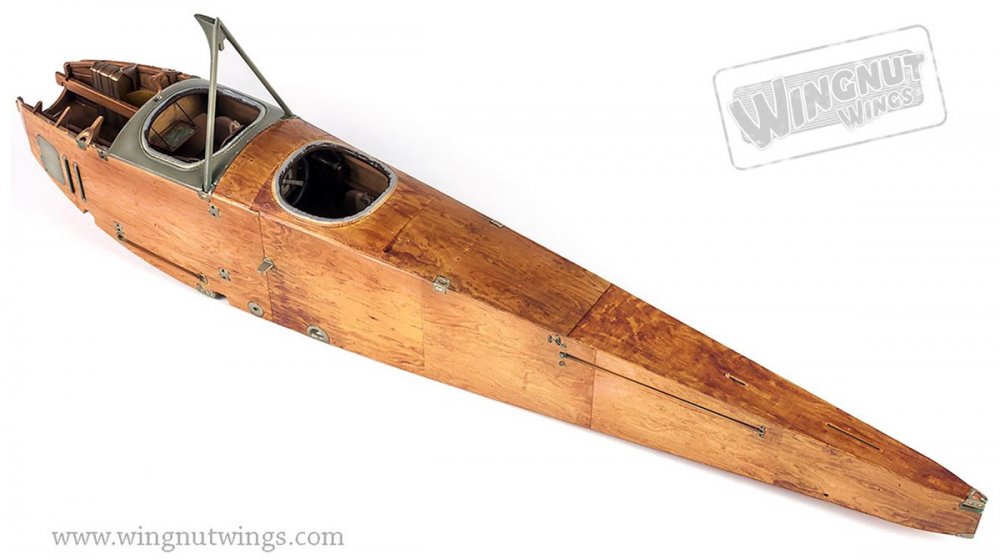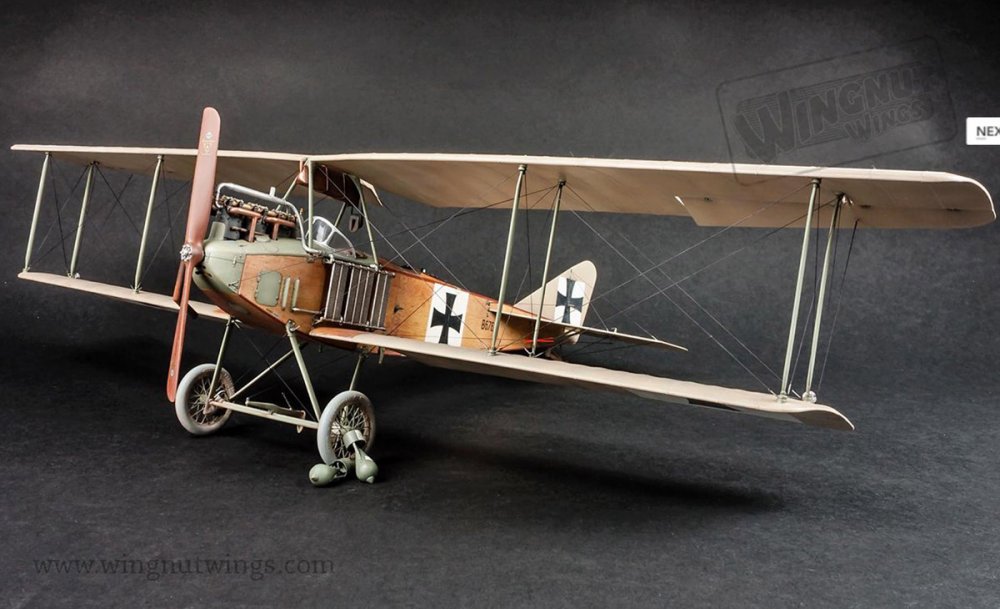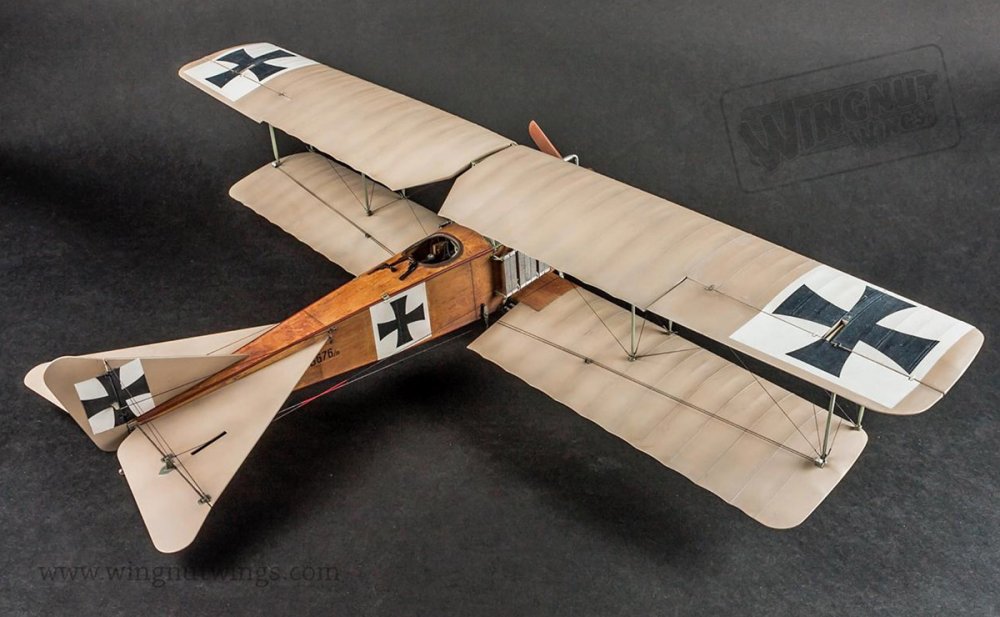-
Posts
3,257 -
Joined
-
Last visited
Content Type
Profiles
Forums
Events
Gallery
Everything posted by James H
-

Ju-88C-2 "4D+FH" in pieces
James H replied to JeroenPeters's topic in LSM 1/35 and Larger Work In Progress
Very classy. Some great touches with this, even though you copped out with the wings. The battle for modelling is not over! -
1:32 Albatros B.II Wingnut Wings Catalogue # 32046 Available from Wingnut Wings for $119.00 with FREE worldwide delivery In the years before Ernst Heinkel became known for some of his more notorious products that his own company built for the Nazis, such as the He 115 and He 111, he worked for Albatros Fluzeugwerke in Berlin. The B.II was one of his very first own-designs, and first saw service in 1913, and despite various in-service changes, both minor and major, continued to see service until after the Armistice. Designed as a reconnaissance aircraft, the type was unusually in that the pilot sat in the rearmost crew position, seriously restricting his field of view. A second crew member sat up front, in his role as observer, and whilst the type was generally unarmed, a number of machines were fitted with field-modifications such as gun mounting ring. Under standard operational service, defence was by means of the crew’s own service revolvers. It has to be remembered that the B.II first saw service in a time when fighter aircraft didn’t exist, and it was common to either throw grenades at each other or take pot shots with personal a sidearm. With the advent of the fighter aircraft, the B.II was gradually removed from absolute frontline service in 1915 and was used as a trainer aircraft. Construction of the B.II was conventional, with timber being used almost in entirety, with the exception of the steel tube control surfaces and fin. The fuselage longerons were made from spruce, and the whole fuselage was sheathed in plywood, and the machine was powered by varying types of engine, namely a 100hp/120hp Daimler-Mercedes D.1/D.II, a 100hp Argus As.1 or 120hp As.II, and also a 110hp Benz Bz.II. This particular model is supplied with the Daimler-Mercedes option. Depending on factory or chronology, the B.II was fitted with either a fuselage or wing mounted radiator, various size/shape fins and rudders. As the war progressed and metals were becoming increasingly valued as crucial for the war effort, the internal tubular fuselage frame was replaced with wood, and the aircraft designated as B.IIa. Another variant of the B.II saw it fitted with floats and designated B.II-W (Wasser). The B.II also claimed its place in history as the first enemy aircraft to drop bombs on England. These were carried internally and manually dropped by the crew member. Sittingbourne and Faversham were the victims of this incursion, but no real damage or casualties were reported. The kit This particular kit was one of the traditional Christmas releases from WNW, and one where no one outside WNW had any idea existed. These are the best sort of Christmas surprises, and especially when they take the form of such a well known and familiar machine, to fans of WW1 aviation. Resplendent with an artwork showing a B.II taking a pot-shot at a passing B.E.2C. Steve Anderson’s depiction of early aviation combat is assured in this image, showing the elegance of both protagonists. I sure hope to see the B.E.2C following this at some stage. Again, the side of the box depicts the supplied schemes, with there being FIVE to choose from here. This kit has something a little special that we’ll look at later in the decals section. There are SIX individually bagged light grey sprues included in this release, as well as a single clear one. Decals are provided on TWO sheets, and a single PE fret is included. From Wingnut Wings: 156 high quality injection moulded plastic parts. Features early production side mounted Hazet radiators and steering wheel control column as well as optional 100hp or 120hp Daimler-Mercedes engines, propellers, exhaust manifolds and covered or uncovered wire wheels. Flugzeugpistole Luger Automatik armament and 12.5kg PuW or 20kg Carbonit bombs. 39 part highly detailed Daimler-Mercedes 100hp D.1 or 120hp D.II engine. 13 photo-etched metal detail parts including uncovered wire spoke wheels. 28 page fully illustrated instruction manual. 2 high quality Cartograf decal sheets including photo realistic 1/32 scale plywood fuselage panels and markings for 5 aircraft SPRUE A This is the main detail sprue for the B.II, and contains parts for many areas of the airframe, and noticeably the cockpit area. Whilst the cockpit module is actually built upon a floor that is to be found on Sprue H, it appears that the rest of the components for this highly detailed area, are to be found here. These consist of bulkheads, including one with integral cabane struts, plus cockpit sidewall frames, fuel tank, throttle/engine ignition panel, map board, TWO instrument board options, control wheel and column with torsion bar, fuel pressurising pump, rudder pedals, multipart pilot and observer seats (identical), and tachometer etc. A few minor parts are moulded on other sprues. In some respects, the cockpit on the B.II seams a simpler affair than a number of other WW1 types, but that is quite deceptive. Seatbelts (lap belts) are supplied as photo-etch parts. Notice that the observer upper deck/coaming is moulded here as a separate part, with some beautiful leather effect crumpling around the edges. You might be forgiven for thinking that this is simply a cockpit sprue, but please note the separate forward cabane strut too, tail skid, main gear claw brake, engine cowls with delicate fastener detail, wing struts with tiny moulded holes for rigging points, undercarriage V-struts and separate spreader bars, and also the locating points for the Hazet radiators. SPRUE B Here be wings. Both upper and lower panels for port and starboard. These are moulded with superb rib and fabric detail, with delicate cap strips and a very fine, scalloped trailing edge that represents the tension on the wire from the doping of the fabric. Please note that the strut locating points are shaped, so that it’s impossible to insert the incorrect strut. Little design details like this, mean a lot. It also has to be noted that there is an external insert to add to the connection point on both upper wings. This is because there is a deep channel moulded here that will accept the connecting rods that sit atop the gravity fuel tank between the cabane struts. It would have been difficult to mould those holes at that depth without resorting to slide moulding. SPRUE C Just two parts exist on the clear sprue. These are the curved forward windscreen and the internal cockpit fuel sight glass. Both parts are crystal clear, and the windscreen framing definition is excellent. SPRUE D For the first time, we can see spoked wheels included in a WNW release! These have had to be tackled in a different way than we are used to seeing with wheels, as they are moulded as halves. This is to accommodate the set of spokes that fit to each side of the hub. Purists will say that these are maybe not fine enough, but they still look exceptional to me. Remember that these have to support the weight of the model, but still retain a scale-like appearance. I think WNW managed to succeed with this. Note that you can even see the tire inflation nipple included! A set of wheels exist without spokes. These can be fitted with the optional fabric cover parts, or you can use the photo-etch spokes included in this release! Another first. The Hazet radiators are included here, plus associated water pipe plumbing. Note that a couple of radiator parts are not for use, and are presumably for a different method of mounting that we’ll see in a future release. Other parts here are the external bomb rack and their 12.5kg PuW bombs. As the manual indicates, these were only fitted from 1916 onwards. For a really agricultural experience, some 20kg Carbonit bombs are included. These are the type that were dropped by hand whilst over target! Date on these is 1914-16. SPRUE E As usual, E is for engine, and from this sprue, you can make either the 100 or 100hp Daimler-Mercedes variants. A project in itself, this contains a multipart sump/crank case with breather pipes and a two part cylinder row onto which water piping is supplied for the jacket cooling, and also TWO types of camshaft and rocker boxes, dependent on whether you will build the 100hp or 120hp version. There are TWO options for the cylinders themselves, again depending on which version of the engine that your model will use. Magneto detail, plus water pump, ignition conduits. All you really need to add are ignition wiring and maybe some Taurus sparkplugs for extra realism. SPRUE F With this, F, is for fuselage, and this is broken down into four separate parts. The external plywood skinning is superbly recreated, with fine panel lines, and what also appear to be rivets. These are actually the wood nail positions, which I imagine will have been driven just below the surface of the plywood. In that case, this would be a good representation of this feature. The forward engine area has beautifully recreated open louvre detail and access port/hinge detail. Wing and tail location slots are clean, and the metal fixing plates for the radiators are also moulded. The upper-rear fuselage section contains the coaming for the pilot position, in the same level of detail excellence as seen on the part on Sprue A. Note that the long edges of the parts also have a beading that protrudes slightly. This represents the spruce longerons in between which the ply sheets fit. You will need to remove a little detail around the engine, if you utilise the high water pipe installation. Internally, there isn’t too much detail, but there are a number of moulded frame elements within the engine bay. It appears that ejector pin marks are kept away from all visible areas too. SPRUE H This last sprue contains the cockpit floor, ailerons, forward lower engine/fuselage cowl, gravity fuel tank, fin and rudder part and stabiliser and elevator parts. Note that the rudder and elevators are integrally moulded and if you wish to pose these dynamically, you would need to lightly score the joint and bend the surface gently. Surface detail on the control surfaces is stark and would not display internal elements through them, so WNW is correct in this depiction. Plastic summary I’ve never yet encountered any issue with WNW quality, with the exception of a couple of ejector pin marks on the odd previous release. This model has no such issues that I can see, with design being both intuitive and intelligent. Engineering isn’t overdone, and the moulding is of the highest quality, with no flaw to be seen. I can’t see any flash either, and seams are so negligible as not to be an issue. Photo Etch This includes a starboard wing walk panel, lap belts, and the spokes for the wheels. As these need to be formed into a dome shape, the circumference is split to allow that to happen. Separate rims are included to hide the split appearance of the spoke part. Etch quality is extremely high and connecting tabs are minimal. Decals TWO Cartograf printed sheets are included here. The first one has the various national marking versions, on both white backgrounds and printed separately. Where the marking overlies a control surface, separate decal parts are supplied, and these also include rigging point holes etc. This is a great way of aligning your decal precisely. A small number of stencils are printed on the first sheet, and also some curious looking dark brown strips. These are actually for the spruce longerons that run down the fuselage length. Sheet two shows some nice innovation by WNW. As well as a few further national markings, a complete set of wood grain decals! These are for both internal and external surfaces. As the B.II was mostly seen in a wooden finish, and because the shape of the subject allows it, WNW have included these photo-realistic decals. The carrier film on them is also barely existing beyond the border of these parts, meaning that fitting them should be easy. Note that decals are also included for the instrument board – both front and rear faces. The resulting finish should be quite extraordinary. I’m sure you’ll agree that these decals look quite amazing. If you want to make these look a little richer, as seen on some schemes, you can of course mist over a transparent colour, such as Tamiya Clear Orange. Also printed here are more stencils, instruments, data plates, and various hinge and cable point grommets/ferrules etc. Printing is first rate, with everything being nice and thin, and in perfect register. The schemes available are: Albatros B.II 210/13, Albatros built, 1915-1916. Albatros B.II, MAN built, April 1915. Albatros B.II 676/15, 1916. Albatros B.II 847/15, 1915-1916. Albatros B.II 1131/15, 1916. Instructions This is a beautiful, 28 page glossy affair with a history on the front, parts plan with colour codes supplied for Tamiya and Humbrol colours, and constructional sequences that are a joy to follow. These are drawn in greyscale, with blue ink used to denote new part additions. Colour references are supplied throughout, and these are interspersed with full colour illustrations what depict completed assemblies. Contemporary reference is supplied for the engine, and period photos are used throughout as reference. These extend to the scheme illustration areas in the rear of the manual. As is usual, Ronny Bar has done the profiles themselves, and they, as always, are excellent. A rigging diagram is also included. Conclusion A fantastic kit of a very beautiful aircraft, carried off with the sort of aplomb that only WNW can create with their releases. The inclusion of the wood decals is also a wonderful bonus, putting the ability to recreate this effect at the fingers of all modellers, and not just the more experienced. Detail is everything that we have come to expect from these releases, from the well-appointed crew positions and the engine, to the realistic fabric and rib detail, coupled with the spoke wheel options. Whilst the Hannover Cl.II and Roland C.II are probably my all-time favourites, I’m feeling they are starting to be usurped by this release. Top marks to WNW. You really need to treat yourself to one of these, right now! Very highly recommended My sincere thanks to Wingnut Wings for this review sample. To purchase directly, click THIS link.
-

Ju-88C-2 "4D+FH" in pieces
James H replied to JeroenPeters's topic in LSM 1/35 and Larger Work In Progress
Looking amazing. Still a cop out not fitting those wings -
That's certainly something to aim for. Probably the best of of these that I've seen done. It's a shame that Bandai didn't pay much attention to the design of the stand, so I can understand why you didn't show its base!
-

1/32 Tamiya Spitfire MkXVIe Cooper race 1949
James H replied to Mauricio_1971's topic in LSM 1/35 and Larger Work In Progress
Frickin' gorgeous! Just when I thought I'd weaned myself off wanting one of these kits too..... -

Revell 1/32 ju-88 a1j
James H replied to Brundledonk's topic in LSM 1/32 and Larger Aircraft Ready for Inspection
Corking result. A sizeable bird too. If you've any construction photos, please share! -

Ju-88C-2 "4D+FH" in pieces
James H replied to JeroenPeters's topic in LSM 1/35 and Larger Work In Progress
Got to love a flange to sort the problem! Looking good. Can't wait to see under some primer. -
Yes, I felt I had to reply to Andreas on LSP.
-
The Trumpeter 262 kits are superb, I agree. The only real 'issue' with the 2-seat is the slight difference in rendering of panel lines between the wings and the new-tool fuse. But, it's a shit hot kit!
-
I would kill for space like that. Even an en-suite crapper!
-

1:32 Revell Spitfire
James H replied to Mish's topic in LSM 1/32 and Larger Aircraft Ready for Inspection
VERY nice! A much maligned kit (in some quarters), but looks great when done -
Moved topic to Non-LSM area....... LSM area is 1:35 and larger only. (Admin)
-
Frickin AMAZING! Were all these machines painted differently to ID the pilot?
-
WOW!!! I never knew that airplane could look so good
-
1:32 PZL P.11c Silverwings Catalogue # Available from Hannants for £99.99 PZL was Poland’s primary aircraft designer and manufacturer in the interwar years, operating from Warsaw. In an age where fighter aircraft design was still very much rooted in stick and string designs of the Great War period, PZL’s designs were modern, advanced and in some cases, revolutionary. The PZL P.11 first flew in 1931, and was still in active front line service as Poland’s main fighter design, at the outbreak of WW2. Unfortunately for Poland, the Germans had embraced aviation technology after Hitler became Chancellor/Head of State, leaving the modern Polish designs sadly lacking in terms of performance and capability. The PZL P.11 was a high gull wing design that had its wing roots sat on the fuselage shoulder, and offered exceptional pilot visibility. Derived from a continual process of development that began with the P.1, the specific version depicted in this kit also had its engine position lowered, improving field of view even further. Powered by a Bristol Mercury V.S2, the PZL P.11c also had an open cockpit and a fuel tank that could be jettisoned from the fuselage in an emergency. Armament was provided by the installation of two 7.92 machine guns, with a number of the 11c types also carrying extra guns in the wings. Maximum speed was around 240mph, and when production ceased upon German invasion, the total number of machines built was around 325. As well as Poland, Romania was also a primary user, with the type also being operated in numbers by Latvia, Bulgaria, Hungary and the Soviet Air Force that used captured Latvian machines. What a sweet little subject for Silverwings to choose. Not only a gorgeous aircraft that we’ve not yet seen in 1:32 despite how familiar it is to aviation fans, but also as a Limited Edition. Silverwings manage to cram all of their parts into a relatively small yet beautifully designed package that arrived in the post inside another box that was packed out with polystyrene foam for added protection. Other manufacturers should take note. Top marks for the atmospheric box art too. The FOUR schemes are shown on the box edge. So, what makes this a Limited Edition? Here’s a full list of contents. 142 resin parts 1 clear resin canopy 4 metal gun barrels (8 parts) 82 photo etched parts film for instruments reinforced wings and struts instruction manual decal sheet including 4 marking options 1 CD including artistic museum photos 1 DVD including museum photos and original manual 1 A4 poster 1 PZL logo sticker As far as proper shipping boxes goes, this was sent inside a sturdy card box, precisely lined with rigid foam sheet. You get the impression that the seasonal postal football team (who kicked the crap out of my Westland Lynx) would have struggled to dent it! Excellent packing. The kit box lid is quite difficult to lift due to the fit. An atmospheric artwork adorns the lid, also indicating that this is a Limited Edition. I’m not too sure how limited it is, but hey! The FOUR schemes are printed on the box sides. It’s the individual markings over a standard scheme that give the variation here. These birds were generally painted in a drab overall green, but Silverwings’ choice of machines are what makes the difference here. We’ll look at those later. Inside the box, there are three bubble-wrap sleeves. One of these contains the fuselage, another the wings, and the last one holds numerous zip lock wallets that has the remainder of the many kit parts. Packing is well thought out and designed to minimize risk of breakage. A rolled up tube of the box art is included, and underneath these is a beautifully printed instruction sheet, a single decal sheet, one photo etch fret and two small format discs (one CD and one DVD). You’ll also find a glossy, peelable sticker with the PZL logo on it. For now though, it’s time to look at the resin and what detail this kit offers Fuselage The PZL P.11c was of conventional construction with regard to the fuselage. Here, that metal sheeted appearance is rather nicely replicated with evenly scribed panel lines, access plates, and other detail such as the spring-loaded foot-holds for accessing the canopy, and also the louvred front fuselage section that sits to the rear of the cowl. Gun channels are neatly recessed, and the access plate behind this location is nicely scribed. Using the information on the reference disc, there is nothing stopping the more adventurous modeller from opening up these panels to show the guns, which incidentally are included also. Note how the fuselage has also been supplied taped together to help keep things in alignment and to protect the fragile fin. Now, like the wing panels, the fin is cast to represent the corrugated metal sheeting that was applied to this area, and the overall finish is highly credible. There are some extremely thin strakes that cross this area, and care will be needed so as not to damage them. An open area in the fuselage belly is where the ejectable fuel tank will be situated, along with a large section of PE that will line the channel and hide any view of the cockpit from the slight gap around the tank. Please note the flat section on the upper forward fuselage. This is where the wing shoulder will sit. The slot down the middle helps with alignment. Removing that tape and splitting the fuselage reveals the internal detail, comprising of various framework structures. This is certainly more than adequate, as when the cockpit is complete, there won’t be much wiggle room inside here to see much other than the key components. Again, detail is sharp and nicely cast. Note that there is no casting block to remove. All you’ll need to do is to polish up the lower fuselage seem when it comes to assembly. Wings, rudder, and stabilisers Both wings are packed into a single zip-lock, so until you use them, I would pack them separately due to the potential damage of any of the fine strakes on the undersides. These are conventionally cast as complete port and starboard halves, and with separate ailerons. The corrugated skin representation is excellent, with the panelling being evident, and the various protrusions/fairings being sharply defined. As with all horizontal flying and control surfaces, the undersides have a delicate strake running in the direction of airflow, and you should ensure you don’t damage these delicate details with and clumsiness whilst you work on assembly, or even handling the model. Now, bring both of those wings together, and you’ll see they meet neatly along the centreline and form the shoulder that will sit atop the forward fuselage. I would strengthen the joint further though by inserting some precisely spaced stiff wire rods before you glue this up….just to be sure of the longevity of this area. I’m sure it will be fine anyway, but nonetheless. As with the fuselage, the leading edge casting block here has been carefully removed, and the forward edge shaped for you, so all you need to do is to finish this off. That’s a very nice touch that I’ve not seen on a resin kit before. The rudder is cast as a single piece, along with delicate control horn and hinge/tab detail. The horn area of the outside skin is splayed outwards to match the rear fuselage shape, and also creating the illusion of metal skin, should you decide to pose this dynamically. A traditional tab fix approach is given to the stabilisers, and each of these and the elevators are cast as single pieces, along with strake detail for the undersides. A little clean-up is generally required, but nothing onerous. A small number of bubbles exist on my sample, but most haven’t broken the surface. If might still be an idea to drill out a few and fill them anyway. The forward edges of the ailerons need a little sanding to remove the edge where the casting block used to be. Engine, propeller and cowl. Depending on the time the machine was built, and therefore your scheme option, the aircraft would’ve had either a 600HP or 630HP engine. Looking at references, there doesn’t appear to be really much different, or indeed anything, in either engine. This is built around a central crankcase with separate cylinders, plumbing, exhausts etc. A crankshaft cowl, forward main engine cowl and a separate collector ring are included. Silverwings has cast the propeller and spinner as a single part, just requiring a little clean-up before assembly. The engine area will also be the recipient of a single piece of PE for the front of the crankcase cowl. Mastering and casting is impressive with many components exhibiting some wonderful and filigree detail, such as the cylinders and crankcase. Components are separately cast, and they will all need to have their individual casting blocks removed and a little clean-up performed before you can assemble. There are roughly 50 parts for the engine and cowl etc. with a small number of spares included, just in case. Cockpit This is glorious! I’m a sucker for cockpit detail, and Silverings deliver just what I like to see. This is based around a typically traditional interwar-style box framework structure whose side panels are separate pieces that are connected by resin angled strut lengths. Frame detail is excellent with numerous strut sections that are capped with PE joint plates. You will of course need to paint many parts separately and mount them within the completed box frame. That detail includes a photo etch instrument panel with acetate instrument film to the rear, throttle quadrant, oxygen tank, map case, foot boards (reminiscent of the Hurricane style), superb pilot’s seat, control column and an antiquated looking set of rudder pedals. A machine gun installation will be added to each side of the cockpit tub. In all, the cockpit tub is a project all of its own, but you will need to study the supplied reference in detail when it comes to painting, as no indicators are supplied on the instructions. A superbly clear piece of resin is supplied for the canopy. Framing is also good, but no masks are supplied, so you’ll have to do this yourself. Support struts All struts for wing support and undercarriage, are reinforced with rigid wire. Resin models do tend to be heavier than styrene, and the inclusion of wire is necessity rather than just a nice touch. Casting is very good, but you will note some areas where the wire is close to the resin surface, and even touching it in places. With my sample, holding this to the light showed that there was no actual breakout, and everything was just fine. Whilst we’re looking at undercarriage struts, I can tell you that the wheels are cast as single pieces, along with integral bub. There isn’t any weighting, but I’m sure this can be fixed rather quickly with a sanding stick. Photo Etch A single sheet, but still plenty of parts. From the photo, you’ll see the crankshaft cowl front plate, fuel tank sleeve, internal frame joint plates, bomb fins, instrument panel, gun sight reticule etc. and the large number of ‘C’ shaped parts on the right hand side are for what looks like some sort of radiator/cooling fin assembly. This looks a little fiddly to assemble, but I think Silverwings approached this in the best and most realistic way. Etch quality is excellent, with small tags holding things in place. Numbering is clear and easily defined in the instruction manual, and more so because the resin parts AREN’T numbered! These are found through visual identification. Turned Brass I’m real pleased to see that Master has supplied the barrels for this kit. You just can’t recreate this feature in resin. Both wing and fuselage guns include a barrel and slotted cooling jacket each. Decals A single sheet contains markings for all machines. Colours look great, and carrier film is minimal. Register is also perfect. Thankfully, they are also thin, which is important if you figure that some of these will need to conform to the corrugated surface. I don’t know how these decals work with setting solutions, so please be careful. No stencils are supplied. The schemes supplied are: PZL P.11c, 45-N, 111 Squadron, Warsaw, October 1938 PZL P.11c, 8.14, 112 Squadron, Warsaw, May 1936 PZL P.11c, 8.70, 113 Squadron, Warsaw, 1939 (Hieronim Dudwał’s aircraft) PZL P.11c, 8.56, 142 Squadron, Toruń, June 1938 (Stanlisław Skalski’s aircraft) Instructions I quite like the format that Silverings has used here. Drawings are simple line format, with no shading. PE parts are clearly defined, and everything looks straightforward enough. As I have said, there are no colour notes supplied during construction, so you’ll need to reference the photos on the supplied discs. The colour profiles are very good, and more than adequate due to lack of stencil data. Strangely enough, no colour data is given for the profiles either. Please check your references. Poster Rather neat and A4 in size. This will look rather nice on the man cave wall whilst your project progresses. PZL Sticker Very attractive, and perfect for adorning a wooden plinth for your final build. The finish is gloss, and it has a backing that needs peeling before application. Discs Disc 1 is a CD that contains 18 high resolution photos totalling about 175mb. These are typically external images of the surviving machine and are perfect for a model build. Disc 2 is a DVD and this contains 2 folders. The first folder is another set of modern museum images that show the PZL in more detail, including the cockpit and detail behind panels. Again, these are high resolution. The last folder holds a gigabyte of TIF images of the original PZL P.11 manual. As well as being historically interesting, these will provide some good reference in themselves for those who want to detail even further. Conclusion For such a small box, the PZL P.11c kit is packed with detail, and the Limited Edition extras are very cool too. Casting is excellent, and looking at the reference images, Silverwings really have nailed this one. A lot of effort has gone into reproducing that corrugated surface to tightly and the model is, compared with other complete resin kits I’ve seen, a simpler affair with its pre-cleaned up main parts and shoulder-mounted rigid wing, and slot in tail surfaces. Some love and attention needs to be spent on the cockpit, simply because it deserves it! There’s plenty of reference supplied to really go to town on this area, and indeed the exterior. A great package of a subject that really deserved to be modelled in a proper scale. A beautifully put together package and Silverwings deserves to do very well with this one. Work on this starts tomorrow for an article in Military Illustrated Modeller. Highly recommended! My sincere thanks to Silverwings for the review sample. To purchase directly, click THIS link.
-

1/32 He-111 Rear Wheel Bay & Rear Turret - Profimodeller
James H replied to JeroenPeters's topic in Aircraft Reviews
Looks real neat. So when you starting this?- 3 replies
-
- profimodeller
- he-111
-
(and 1 more)
Tagged with:
-
Wow! Those colour patches bring it to life. I'll copy this
-

Questions relating to Resin and Photo etch ...
James H replied to Artful69's topic in Modelling Discussion
I sometimes wash it. If it appears to be a little oily, then always. Eduard and CMK (Artillery in new Fly Wessex kit), all ok. -
That looks amazing! What yellow did you use for those areas? This is making me eager to start mine. Resist I must. To much to do I have.
-

Eduard Bf109E-1 with BigSin fit out - Build #1
James H replied to Artful69's topic in LSM 1/35 and Larger Work In Progress
First of all, congrats on the engagement!!! You'll need a big cake and some shipping boxes for us all Now, real glad you started this one and your online building cherry is busted. Really can't wait to see what you make of this one. The new tools are sharp, so no excuses! -

Ju-88C-2 "4D+FH" in pieces
James H replied to JeroenPeters's topic in LSM 1/35 and Larger Work In Progress
Hihihihihi Hohohohohoho -
Looking sweet


